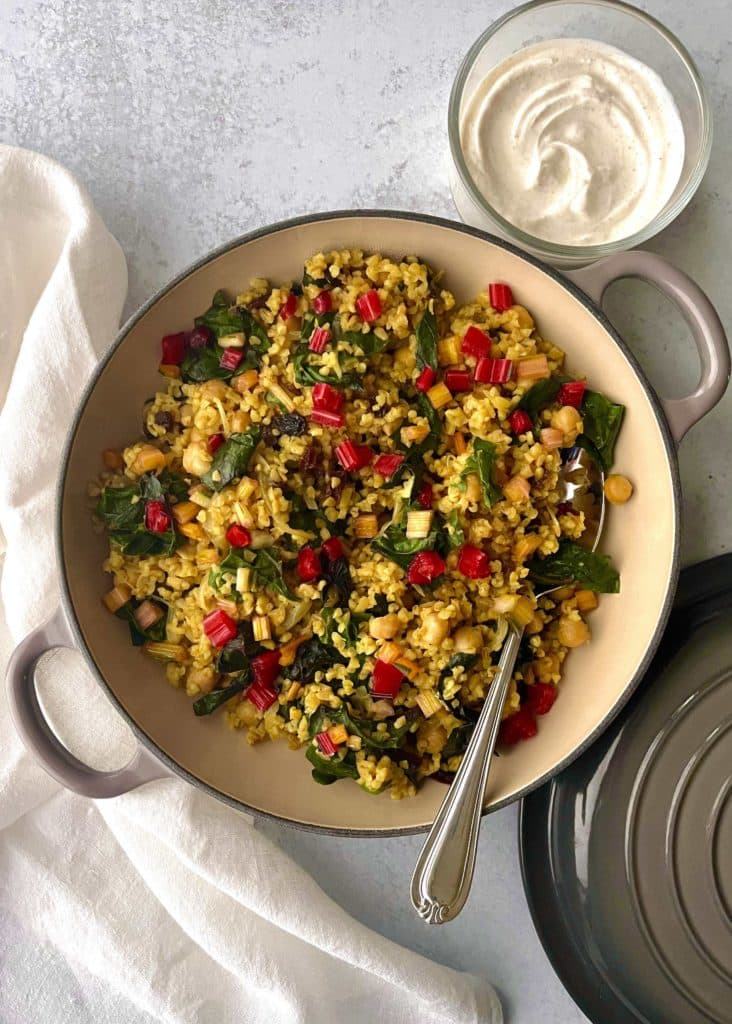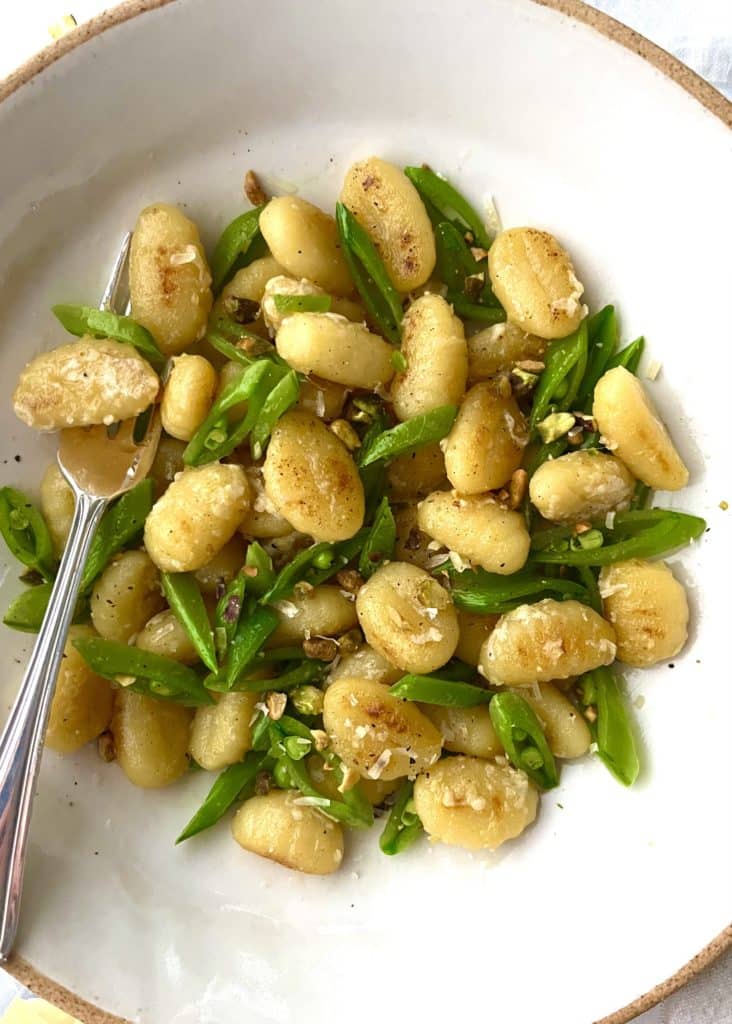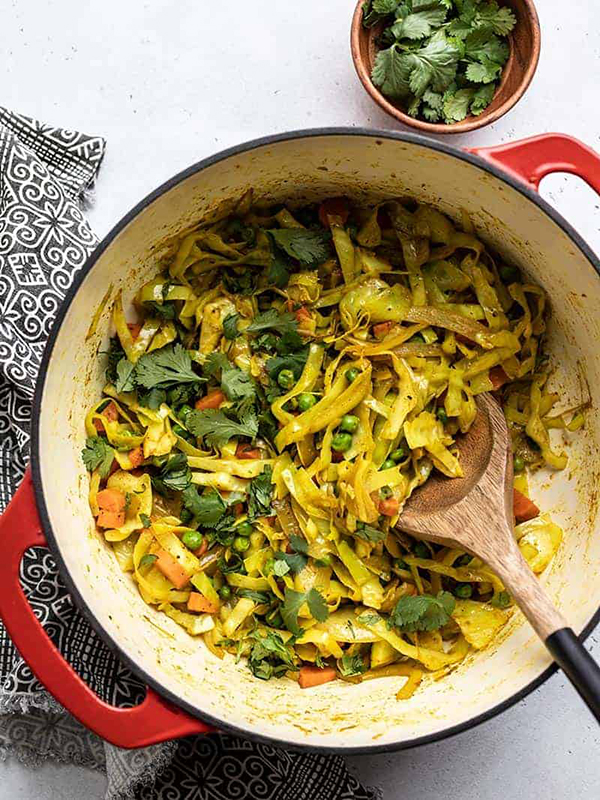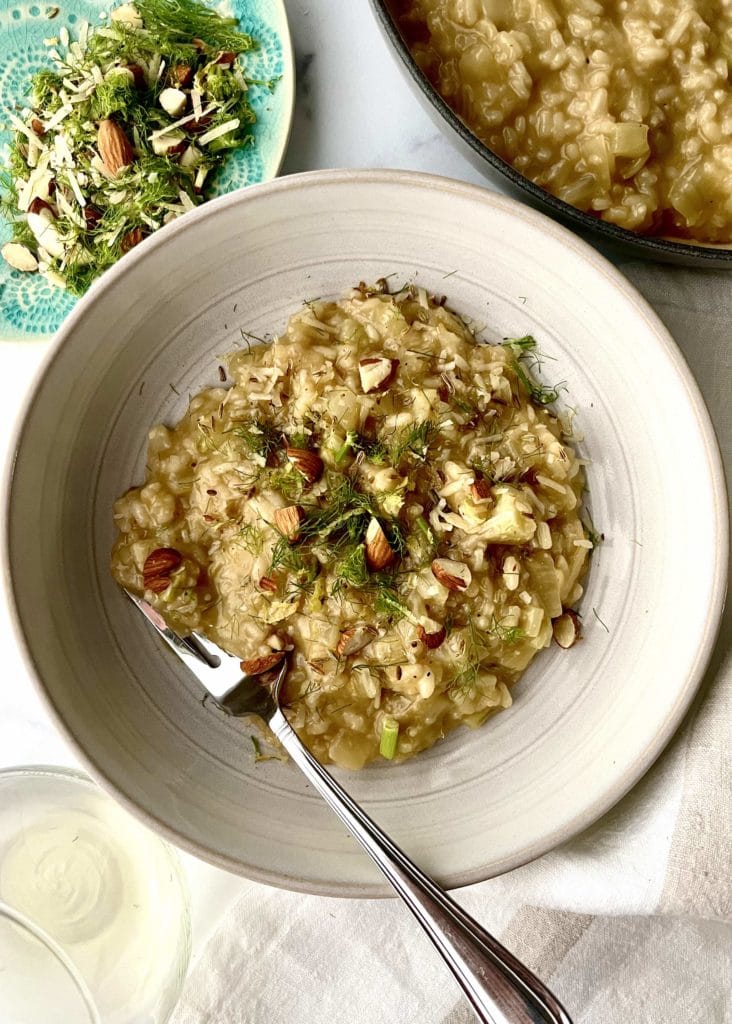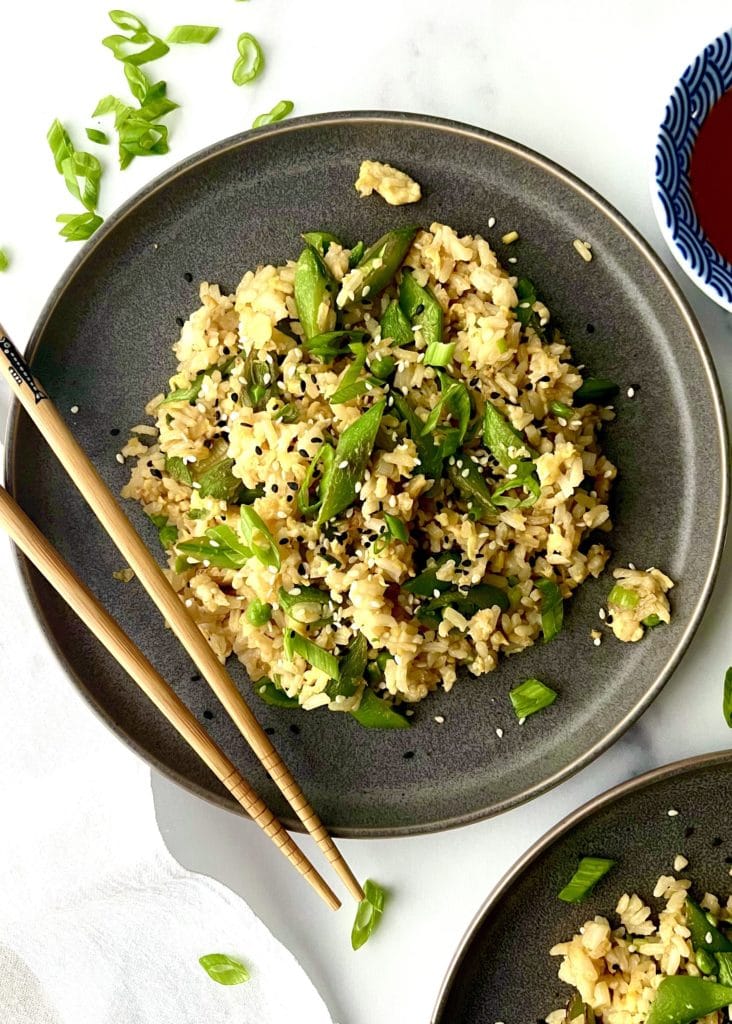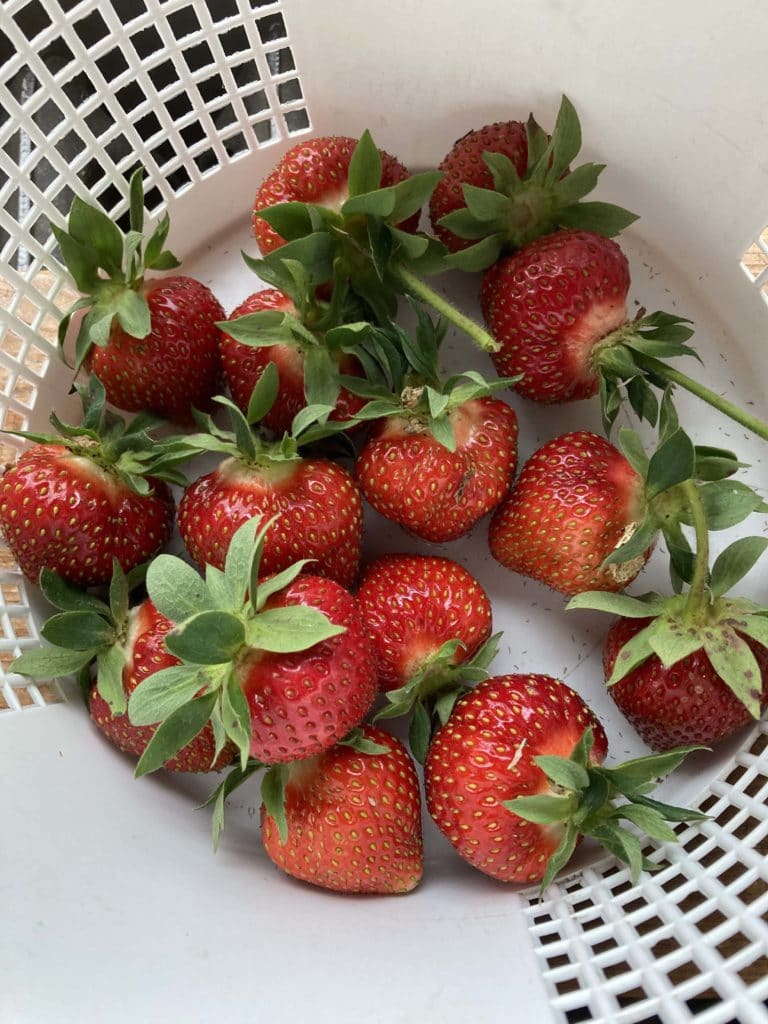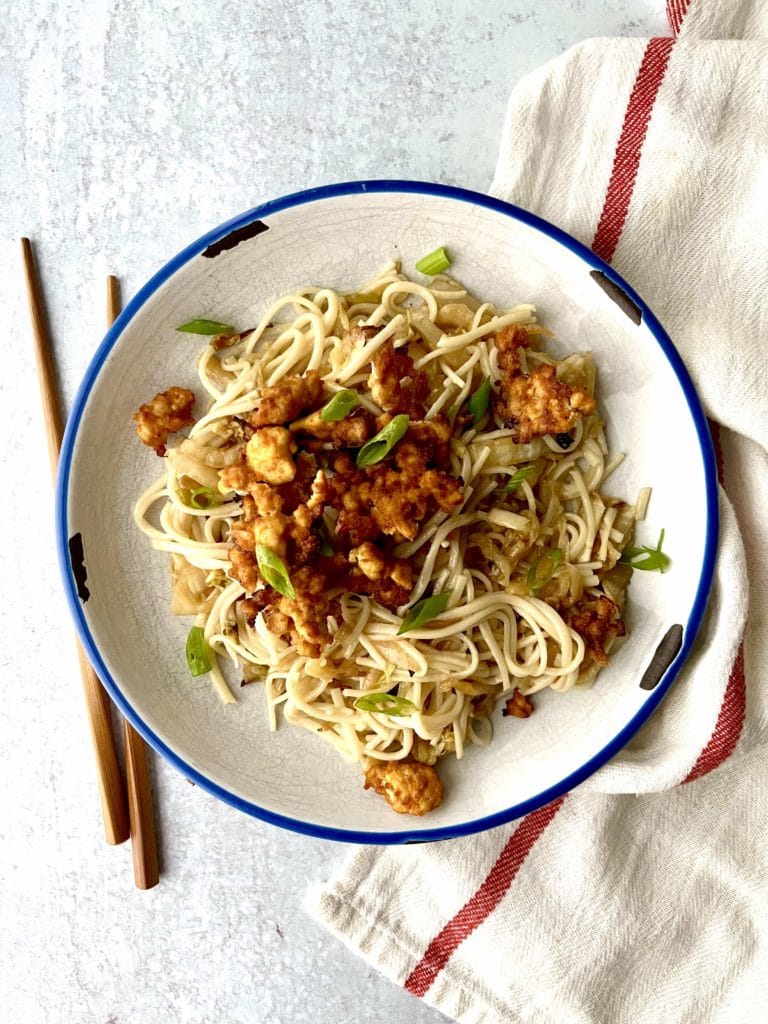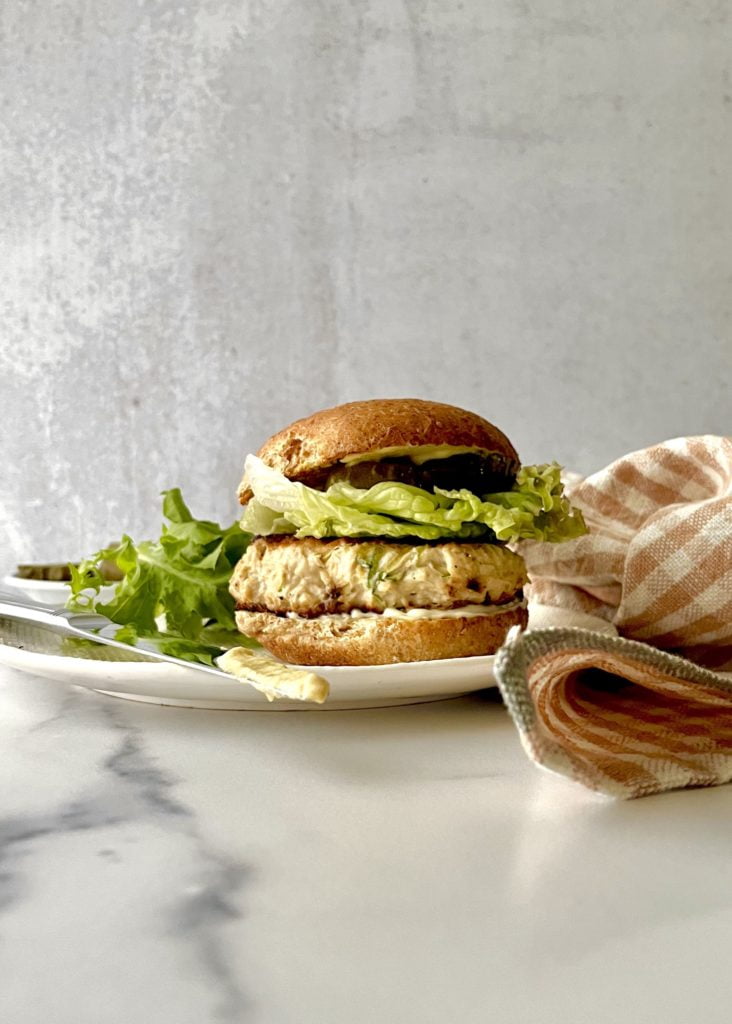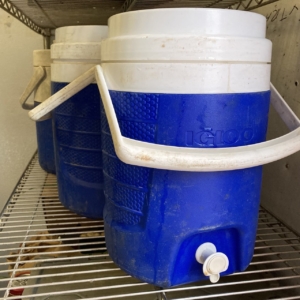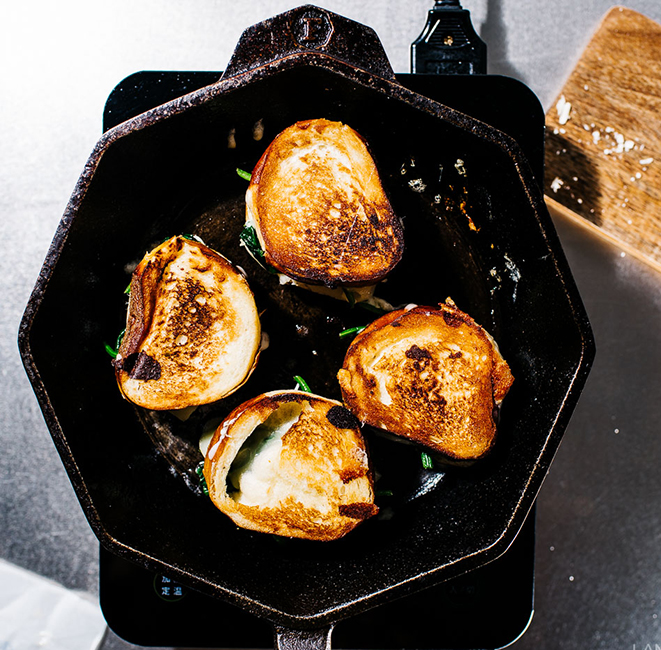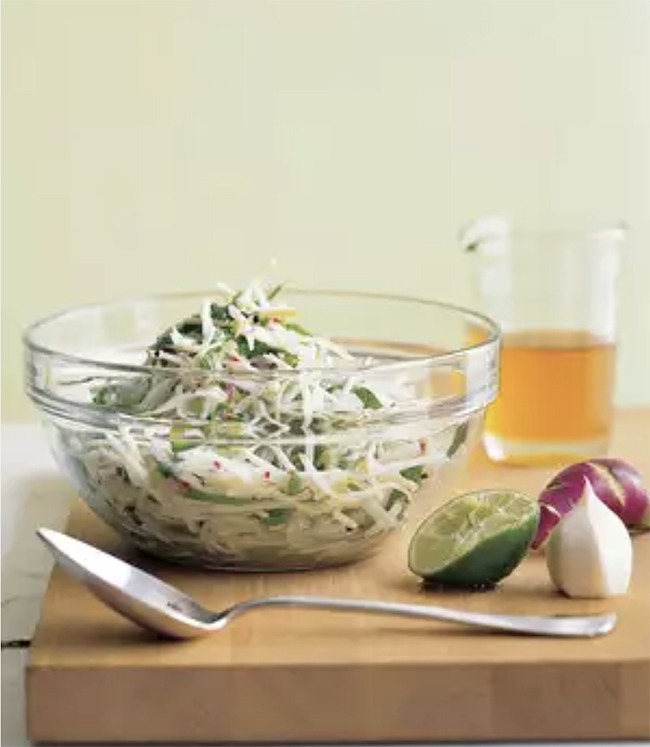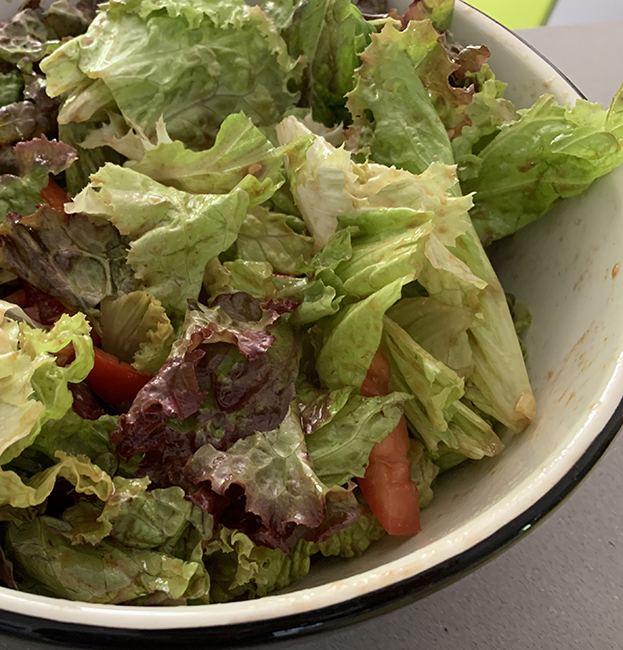Farm Newsletter
Week #8; Cucumber bounty
- On: July 13, 2022
 0
0
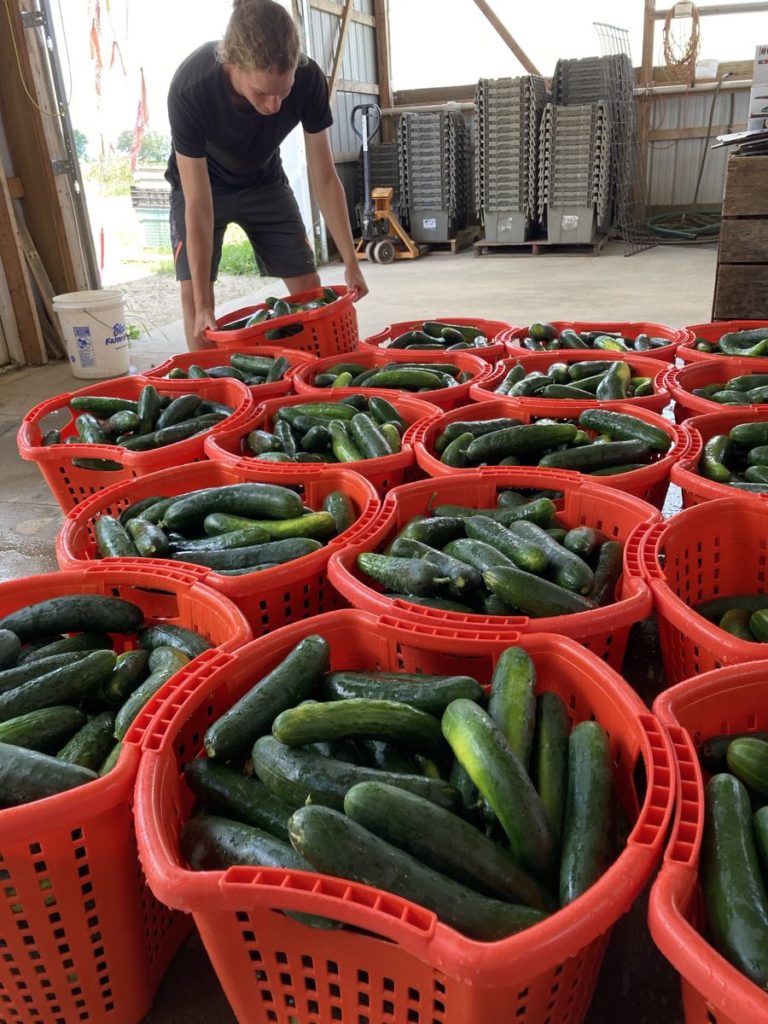
Ari readies cucumbers for washing.

Look at this beautiful cucumber field, with strong vines and few gaps. From the left in the distance, Ari, Karen, Maggie and Chelsea. Every cucumber team includes Maggie and Ari, our greatest cucumber enthusiasts. They compete to find the first cucumber but then share what they find.
Let’s talk about the cukes and zuccs.
Hello all! We are sending four cucumbers this week, on the heels of five last week. The cucumber field started with unusually big harvests. Enjoy the bounty now, knowing that both the zucchini and cucumber fields will settle into smaller harvests. We are lucky that both plantings established so well this spring. Cucumber seedlings are fragile and we sometimes lose one third of them soon after planting. Not this year! Our crew was very attentive during transplanting. Rough handling leaves invisible damage that leads to dead plants. Our experienced crew knows this well, but our newest employees did a great job too. That’s what happens when you hire UW/Horticulture students and gardeners and people with prior farming experience! This spring we covered each cucumber bed with its own narrow piece of floating row cover, using extra care to secure the covers snugly. Loose covers flap in the wind and beat down on the seedlings. Some crops can handle that but cucumbers cannot. We certainly had a lot of strong winds this spring (good grief!) so the effort paid off.
Soon the cucumber and squash harvests will slow and we’ll send smaller amounts. Enjoy them now!
Strategies
Cucumbers – We routinely make cucumber salads with five cucumbers. That’s a big batch but they hold well in the fridge and improve over a few days. Think about using half your Walla Walla onion portion in whatever cucumber salad you choose. They are a great combo.
Zucchini – If you are undecided what to do with your zucchini and Zephyr squash, grill it then add to whatever you cook this week. Grilled squash s a great topping for pasta dishes (cold or hot), etc. Here’s my usual method.
- Thinly slice squash lengthwise, about 1/4 inch thick or whatever thickness works for your squash.
- Marinate in a light dressing of rice vinegar, sesame oil, soy sauce and garlic.
- Grill the squash until tender.
- Return to the marinade – now it will soak up more flavor.
Thanks for reading.
Beth
Veggie List & Veggie Notes
Week #8, July 14/15, 2022
– Weekly shares
– EOW/ purple
– Sampler/ moon
Broccoli, 1.5 to 2 lb
Swiss chard, 1 bunch
Green leaf lettuce
Snap peas, 0.4 lb
Zucchini &/or Zephyr squash, 2.5 – 3 lb
Cucumbers, 4
Green bell pepper, 1
Walla Walla onion
Curly parsley, 1 nice bunch
For a few sites; 1 sunflower
Next week’s box will probably contain lots of summer veggies.
Broccoli – If your broccoli seems wilted, soak in cold water for fifteen minutes and it will plump back up.
Storage: Cover and refrigerate.
Swiss chard – Cover and refrigerate. Now that spinach is done for the year, it’s time to re-purpose your spinach recipes to Swiss chard. They are closely related. Chard has a thicker leaf and requires a few minutes more cooking to achieve tenderness, unlike spinach which wilts quickly.
Walla Walla onion – These fat onions are sweet, crisp and very mild. Wonderful raw or lightly cooked. Try cutting into wedges, threading on a skewer and grilling. Do not try to fry these onions – it doesn’t work because of their high water content.
Storage: It’s OK to store at room temperature for up to one week. Otherwise, refrigerate.
Parsley – The herb of the week! A great addition to salad dressing, tomato dishes or casseroles. Tabouli is a great use for tender parsley
Storage: Cover and refrigerate.
Sunflowers – We will send sunflowers to one or two sites at a time, as they are ready to harvest. Trim the stem and put in fresh water. If you re-trim the stem and change the water, it will last a little longer.
Snap peas – Storage: Refrigerate. String the pods as usual.
Please be alert to occasional off-type pods. Sometimes there will be shell peas mixed in. Those peas are edible but the fibrous pods are not. If you find shell peas mixed in, it will be a very small amount.
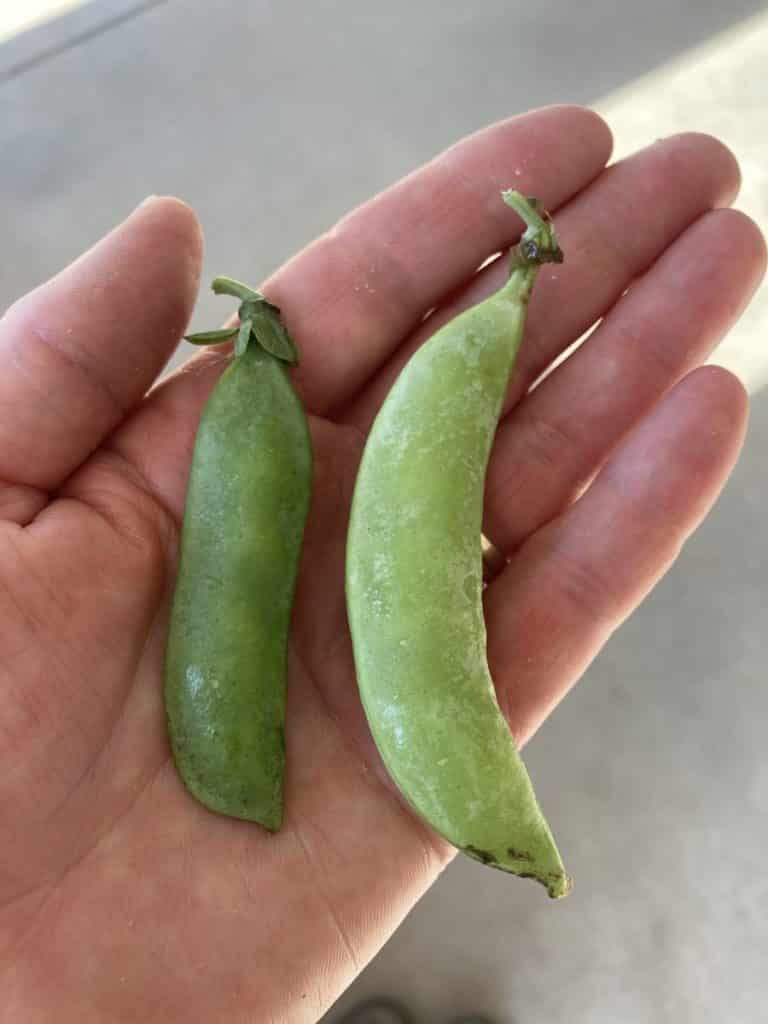
Shell pea (left) and snap pea pods (right). Shell pea pods are darker green and often less waxy. When in doubt, try eating it. Snap pea pods are crunchy and edible. Shell pea pods are fibrous.
RECIPES by PHOEBE
Bulgur, Chickpeas & Chard with Lemony Chard Stems & Coriander Yogurt
This recipe is very loosely adapted from the bulgur mejadra recipe in Sami Tamimi and Tara Wigley’s cookbook Falastin. A tangy coriander yogurt sauce and lemony marinated chard stems brighten the earthy bulgur and chickpea pilaf. Enjoy this dish as a vegetarian main, or serve it as a side with any protein you like.
Serves 4 to 6
Prep time: 15 minutes
Cook time: 35 minutes
1 bunch Swiss chard
2 tablespoons plus 2 teaspoons fresh lemon juice
1 cup whole milk Greek yogurt
1 teaspoon ground coriander
2 tablespoons extra-virgin olive oil
1 medium onion, thinly sliced
2 teaspoons ground cumin
½ teaspoon ground turmeric
1½ cups dry coarse bulgur
1½ cups cooked chickpeas, drained and rinsed
2¾ cups water
¼ cup raisins
Sea salt and freshly ground black pepper
- Remove the stems from the chard. Roughly chop the leaves and set aside, then dice the stems. In a small bowl or jar, toss the diced chard stems with 2 tablespoons of the lemon juice and ½ teaspoon sea salt. Set aside to marinate while you prepare the rest of the dish.
- Make the coriander yogurt. In a small bowl, stir together the yogurt, coriander, the remaining 2 teaspoons lemon juice, and ½ teaspoon sea salt. If the yogurt is very thick, add water, 1 teaspoon at a time, until it has a creamy, dollop-able consistency. Set aside.
- Heat the olive oil in a large, deep lidded skillet over medium heat. Add the onion and ½ teaspoon sea salt and cook, stirring occasionally, until soft and browned, about 10 minutes. Stir in the cumin, turmeric, another ½ teaspoon sea salt, and several grinds of pepper. Add the bulgur and chickpeas and stir to coat in the oil and spices. Add the water and bring to a boil. Reduce the heat to low, cover, and simmer until all the liquid is absorbed, about 15 minutes.
- Remove the pan from the heat, uncover it, and quickly add the chard leaves and raisins. Cover the pan with a clean dish towel, then firmly place the lid back on the pan and set aside to steam for 10 minutes.
- Remove the lid and dish towel from the pan and gently toss the wilted chard leaves and raisins with the bulgur mixture. Season to taste, portion onto plates, and serve with dollops of the coriander yogurt and the pickled chard stems on top.
Skillet Gnocchi with Snap Peas and Lemon Butter
In this quick, one-pan recipe, crisp snap peas and crunchy pistachios offer a delicious contrast to chewy pan-seared gnocchi. Shelf-stable and refrigerated gnocchi both work well here – no need to boil them first.
Serves 2 generously or 4 modestly
Prep time: 10 minutes
Cook time: 15 minutes
2 tablespoons unsalted butter, at room temperature
1 tablespoon lemon zest
1 garlic clove, grated
½ teaspoon sea salt, plus more to taste
3 teaspoons extra-virgin olive oil
6 ounces snap peas, strings removed, peas thinly sliced on the bias
1 (17-ounce) package refrigerated or shelf-stable store-bought gnocchi
1 tablespoon fresh lemon juice, plus more to taste
¼ cup freshly grated Parmesan cheese
Freshly ground black pepper
1 tablespoon crushed toasted pistachios
- In a small bowl, place the butter, lemon zest, garlic, and salt. Use a fork or spatula to cream them together. Set aside.
- Heat 1 teaspoon of the olive oil in a large nonstick skillet over medium heat. Add the snap peas and a pinch of salt and cook, stirring occasionally, until the peas are crisp-tender and bright green, 2 to 3 minutes. Remove from the pan and set aside.
- Return the skillet to medium heat and add the remaining 2 teaspoons olive oil. Add the gnocchi and spread it in a single layer. Cook without stirring until it becomes golden and lightly crisp on the bottom, about 3 minutes. Toss and cook for another 3 minutes without stirring, then toss and cook for another 2 to 3 minutes without stirring, until the gnocchi is crisp and golden on all sides.
- Stir in the snap peas and turn off the heat. Add the lemon juice and lemon butter and stir until the butter melts and coats the gnocchi and peas. Stir in the cheese and several grinds of pepper. Season to taste with more salt, pepper, and/or lemon juice, if desired. Garnish with the pistachios, and serve.
.
.

Photo by Jeanine Donofrio and Jack Mathews
Spaghetti Aglio e Olio
From Love & Lemons
Spaghetti aglio e olio (spaghetti with garlic and oil) is a wonderful dish to make when you have lots of fresh parsley on hand. This recipe also calls for kale, which isn’t traditional, though you could easily leave it out or replace it with the Swiss chard from this week’s box.
.
.
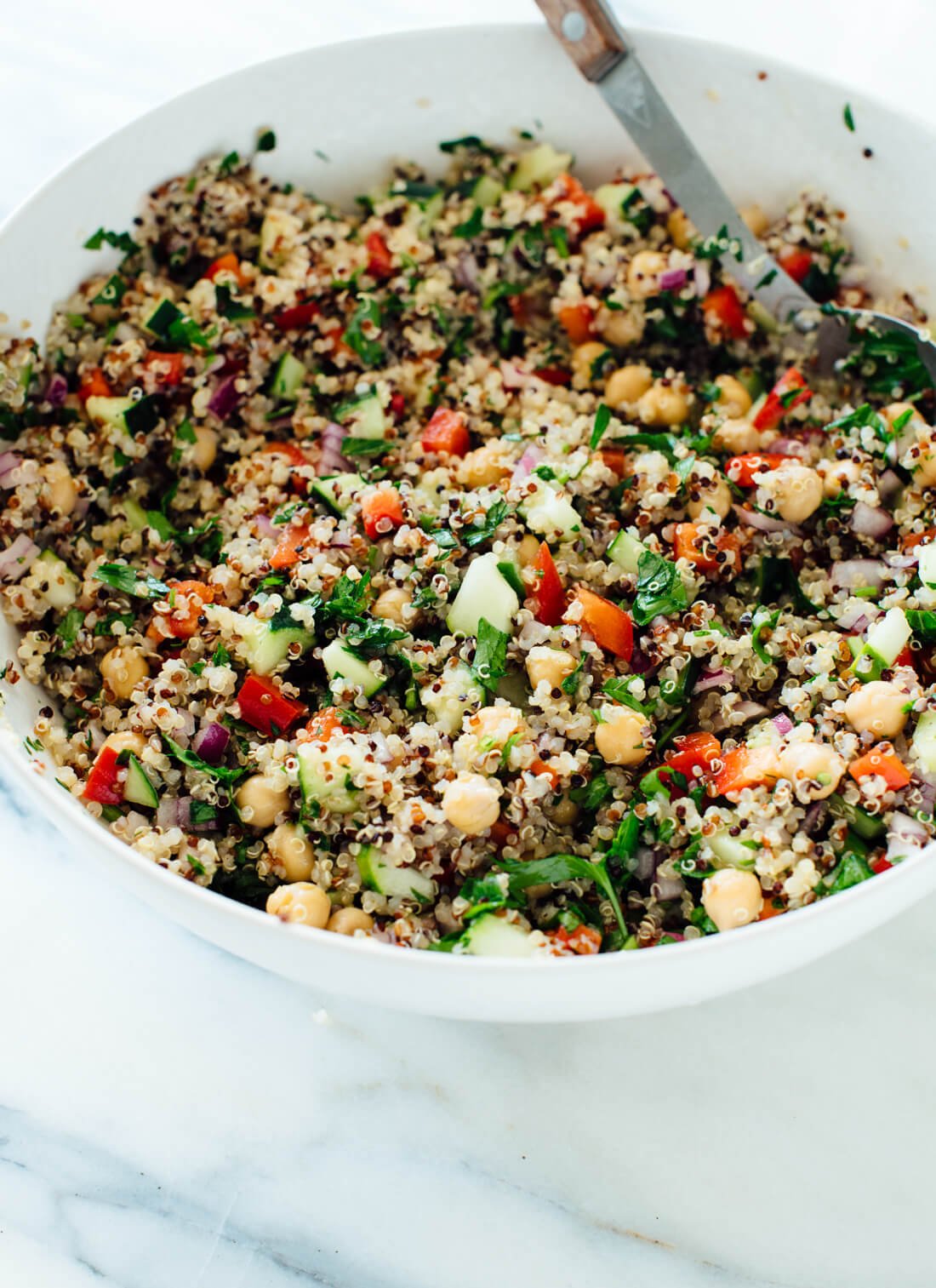
Photo by Cookie + Kate
Favorite Quinoa Salad
From Cookie + Kate
Packed with fresh parsley, this quinoa salad is like a twist on Lebanese tabbouleh. It would be a great salad to make ahead for a picnic or cookout or to pack for lunch. The recipe calls for red onion and red bell pepper. Feel free to swap in Walla Walla onion and the green bell pepper from your box.
.
.
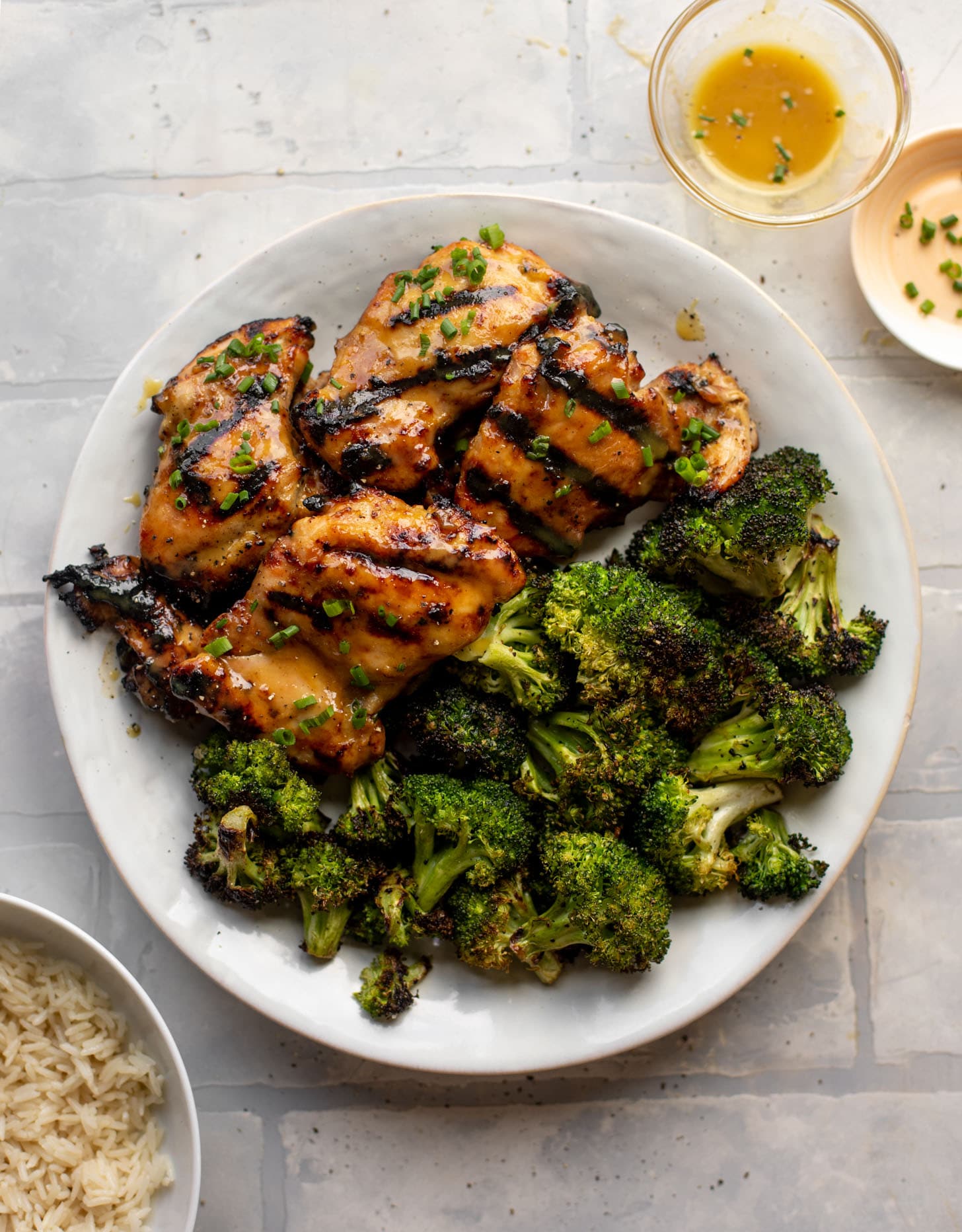
Photo by How Sweet Eats
Honey Mustard Grilled Chicken
From How Sweet Eats
Have you tried grilled broccoli? The florets become lightly crisp, and they take on a delicious charred, smoky flavor. While you’re grilling, cook this honey mustard chicken alongside the broccoli to make a complete meal.
.
.

Photo by Jeanine Donofrio and Phoebe Moore
Sautéed Yellow Squash
From Love & Lemons
This recipe is a simple, flavorful veggie side dish that you could serve alongside almost any summer meal. A bright parsley oil coats tender slices of summer squash (or zucchini), and a quick bread crumb topping adds crunch. We call for Love & Lemons’ vegan Parmesan in the topping, which is a nutty, savory blend of lemon zest, cashews, and nutritional yeast. If you don’t keep these ingredients on hand, you could swap in regular Parmesan cheese instead.
.
.
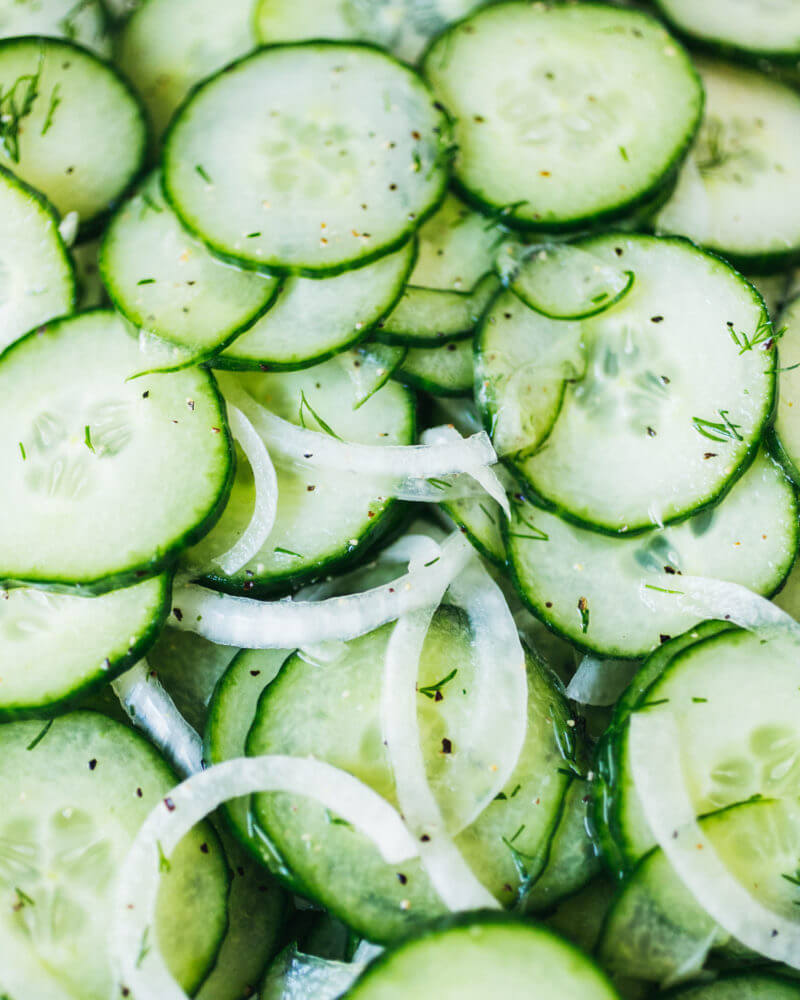
Photo by A Couple Cooks
Cucumber Salad with Vinegar
From A Couple Cooks
This type of vinegary cucumber salad is one of my favorite summer side dishes. It’s salty, tangy, lightly sweet, and super refreshing. I recommend slicing the cucumbers in half lengthwise and removing the seeds with a spoon before preparing this recipe.
.
.
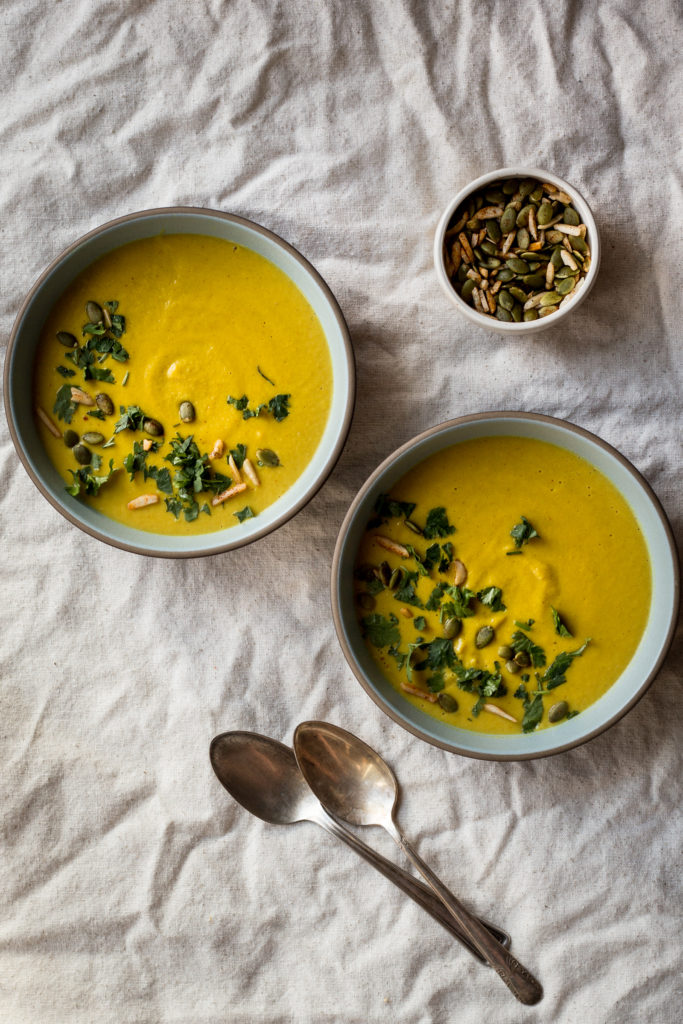
Photo by Andrea Bemis
Spiced Summer Squash & Chickpea Bisque
From Dishing Up The Dirt
This thick, creamy, and aromatic soup would be a delicious way to use the summer squash (or zucchini) in your box this week. Blended chickpeas and a can of coconut milk create its luscious texture.
Week #7; That was a soaker.
- On: July 06, 2022
 0
0
That was a soaking storm last night! Those of you in Madison probably did not get much rain. That storm front slid over our farm for hours yesterday. For reference, we are located south of Madison, within Wisconsin and above the “o” in Rockford in the photo. It made for a muddy and steamy day.
Our farm was getting very dry, so the 4 inches that fell Monday through yesterday was welcome, even though it complicated today’s harvests. The fields were able to soak up most of it. By the end of the today, it was still muddy but easier to get around.
U-pick wrap-up
We are glad that many of you came to the farm for strawberry u-picks this year. We had open reservation slots for both events. I interpret that to mean that everyone who wanted a reservation got one. Well, the berries were more abundant than we realized, so folks were pretty happy with how much they picked. We were lucky with the weather. It was beautiful both days. Thanks for coming out!
Veggie List & Veggie Notes
Week #7, July 7/8, 2022
– Weekly shares
– EOW/ green
‘Caraflex’ or ‘Farao’ cabbage (1 or 2), ~2.5 lb total
Cucumbers, ~5
Collards OR lacinato kale (by site)
Snap peas, ~1/2 lb
Snow peas, ~1/4 lb
(Both types peas are in same bag.)
Broccoli, 1 medium head
Zucchini &/or Zephyr squash, ~3 lb
Fennel OR a sunflower (by site)
Basil, 1 husky branch
Garlic scapes, a handful
Next week’s box will probably contain broccoli, Swiss chard, Walla Walla onion, and more.
‘Caraflex’ or ‘Farao’ cabbage – These are nice salad-types that we grow in summer. Don’t you love the pointy shape? They have thinner, more tender leaves than typical green cabbage. Great in salads and slaws but can also be cooked. Here’s the Caraflex description from the seed catalogue: “Inner leaves are tender, crunchy, and have an excellent, sweet and mild cabbage flavor. Perfect for summer salads, slaws, or cooked dishes.”
Cucumbers – Our cucumber field is doing great so we’re sending enough to be creative. Make a big batch of cucumber salad or raita or smoothies, etc.
Storage: Store at room temperature for a few days or refrigerate in the warmest part of your fridge. Cucumbers get chilling injury if stored too cold.
Snap & snow peas – As usual, both types are in one bag. We really like this new snap pea variety, PLS140. Long pods, sturdy plants and good flavor despite the heat. Hot weather is always a challenge for peas. Enjoy this batch.
Basil (branched, leafy stalk) – Everyone gets a husky sprig, the first cutting of the season.
Storage: Basil deteriorates if stored in the refrigerator. It is best stored at room temperature with the cut ends in water, for example in a jar or vase. Treat it like a flower. Give the stem a fresh trim and change the water every day or two.
Garlic scapes (curly green things) – Garlic scapes grow at the top of garlic plants. They look like flower buds but are actually clusters of tiny bulblets. We snap off the young scapes to direct the plants’ energy into forming garlic bulbs underground. Use scapes as a substitute for garlic cloves. They can be minced, mixed with olive oil, and added to stir fries or simple pasta dishes. The scapes can be sautéed, but will not brown like garlic cloves. Expect them to retain their crunch even when cooked, and to be milder than garlic cloves, closer in pungency to the green garlic we’ve sent.
Sunflower (for 1 or 2 sites this week) – We continue experimenting with sunflowers as they are one of the few flowers that we can send in the CSA boxes. This cheerful variety ‘Vincent’s Choice’ does not produce pollen, making it an excellent choice to pack with vegetables. The sunflowers are for beauty and joy, not to eat!
Storage: Trim the stem and place in water. If you re-trim the stem and change the water a few times, the flower should last about one week. Do not put in the same water as your basil.
RECIPES by DEB
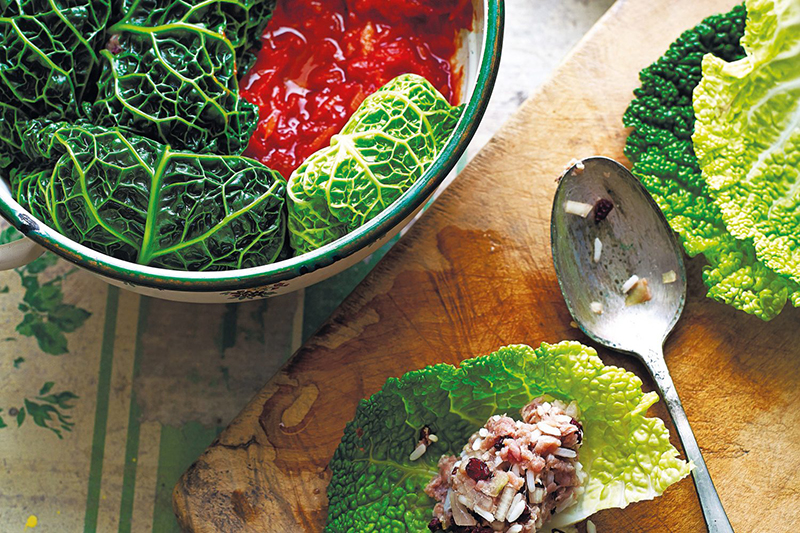
Photo by Kris Kirkham
Olia Hercules’ Stuffed Cabbage Rolls
This dish is based on a recipe from Ukrainian chef Olia Hercules’ lovely cookbook, Mamushka, that has lots of interesting vegetable preparations. The book is currently out of print, but available at libraries, and as an ebook, and there are a lot of recipes on Olia’s website.
Serves: 6 generously (makes about 12 rolls)
Takes: about 40 minutes to assemble, and 45 minutes to bake.
Tomato Sauce
2 tbsp vegetable oil
1/2 cup finely chopped onion
1 carrot, grated
1 tablespoon sugar
1 tablespoon tomato paste
1 bay leaf
1 14-ounce can whole or chopped tomatoes
14 fluid ounces (400 ml) water
juice of one half lemon
salt and freshly ground pepper
Rolls
12 large leaves of cabbage, separated from one or two heads
2/3 cups white rice, parboiled for 5 minutes, and drained and rinsed
1 pound of ground meat, your choice, or a mixture – beef and pork are traditional, turkey or chicken are also good!
1/2 cup grated onion
1/2 teaspoon ground or freshly gated nutmeg
salt and freshly ground black pepper
for serving: fresh dill and sour cream
- Make the sauce: Heat the oil in a Dutch oven or skillet with a lid that can go in the oven. Cook the onion and the grated carrot over medium heat for 5-10 minutes until soft but not browned. Add the sugar and the tomato paste and cook for another minute. Add the bay leaf, tomatoes – break them up with your hands if you use whole – and water and bring to a boil. Reduce the heat and simmer for about 10 minutes until slightly thickened. Add the lemon juice, season with salt and pepper, and set aside.
- Make the rolls: Preheat the oven to 350°. Bring a large pot of water to a boil, and blanch the cabbage leaves for about 2 minutes, until pliable. Drain and rinse with cold water and drain again.
- Combine the meat, parboiled rice, grated onion, and nutmeg and salt and pepper. Place 2-3 generous tablespoons of filling on each cabbage leaf and roll.
- Nestle the rolls in the sauce, folded side down, snugly so they do not unravel. Cover the Dutch oven and bring to a boil on the stove, then transfer to the preheated oven and bake for about 45 minutes, until cooked through.
- Serve with chopped dill, sourdough bread, and a dollop of sour cream on the side.
.
.

Greens with peanut sauce
This dish has African roots and is an example of how foodways migrated involuntarily with enslaved Africans and became American Southern cooking. You’ll find this dish served as a side in BBQ joints throughout the South, especially in Georgia and Louisiana.
Serves: 2-3, easily doubled or tripled
Takes: about 30 minutes
1/2 pound kale or collard greens (spinach also works but you will need more spinach since it will cook down more then the tougher greens)
2 tablespoons vegetable oil, olive oil, or butter
1/2 cup chopped onion
2 cloves of garlic, minced or put through a press
1 medium tomato, peeled and chopped, or about 1/2 cup canned diced tomatoes
1 teaspoon cumin
1/2 teaspoon coriander
salt and freshly ground black pepper
1/3 cup peanut butter, preferably natural but whatever you’ve got will work
2-3 tablespoons of chopped salted peanuts
-
- Rinse the greens and cut or pull off the large stems. Bring a large pot of water to a boil, add the greens, and cook for 3-5 minutes, until starting to get tender. Drain, reserving about 1 cup of the cooking water.
- Heat the oil in a pot – you can use the same one that you cooked the greens in, no need to wash – and add the onion. Cook for 2-3 minutes until softened, and add the garlic, tomatoes, cumin, coriander and salt and pepper. Stir well and cook for another 5 minutes or so.
- Take handfuls of the greens and squeeze out as much liquid as you can, and transfer them to a cutting board. Chop into bite-sized pieces, and add to the cooking pot. Add about 1/4 cup of the reserved greens-cooking liquid, cover the pot and cook for about 10 minutes, until the greens are really getting soft.
- Add the peanut butter and another 1/4 cup of the reserved greens-cooking liquid, mix well, cover and cook over a low heat for 15 minutes. Check periodically to see if it’s sticking and add a little more of the greens-cooking liquid as necessary. Garnish with the chopped peanuts and serve. Any leftovers are delicious tucked into a pita bread for a sandwich the next day.
Curried Cabbage
From Budget Bytes
In addition to cabbage we have cucumbers in this week’s box, so serve this curried cabbage with cucumber raita. Combine 1 cup plain yogurt; 1/2 cup peeled, seeded, and diced cucumber; juice of 1/2 lemon or lime, 1 clove garlic, minced; and if available, 2 tablespoons minced fresh herbs, like mint or basil.
.
.
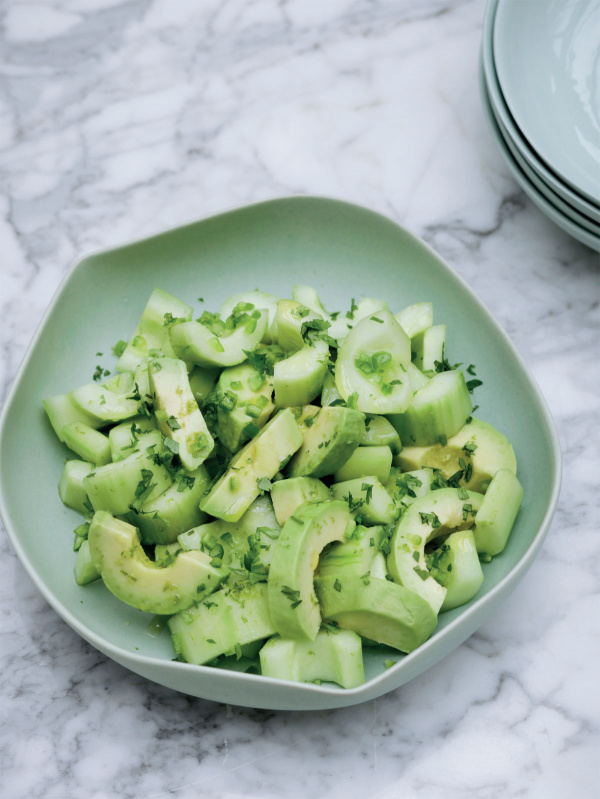
Cucumber, Chilli And Avocado Salad, by Nigella Lawson
Photo by Keiko Oikawa
From nigella.com
This mostly cooling salad, perfect for hot weather, has a bit of zip from the chiles – that you can adjust to your taste.
.
.
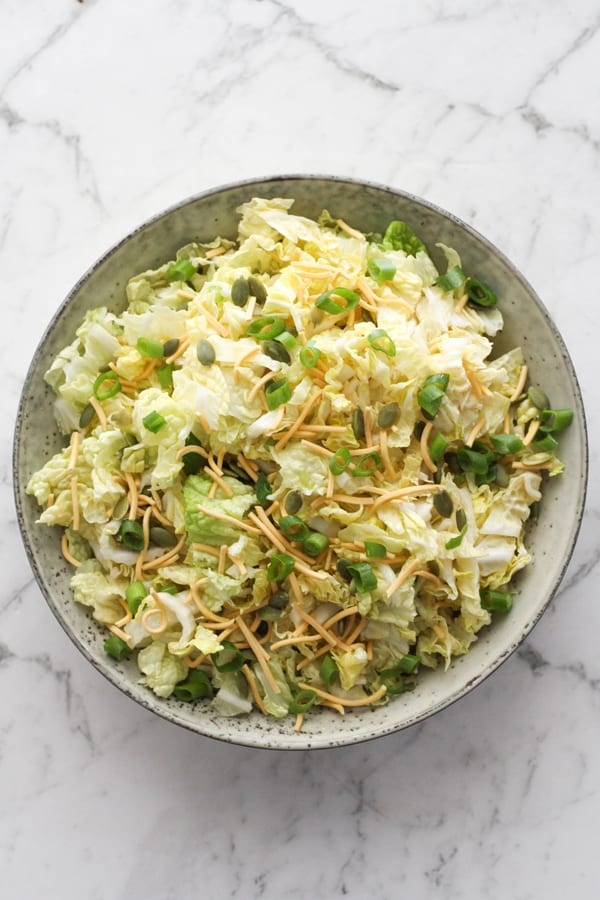
Cabbage and Crunchy Noodle Salad
From Cook it Real Good
This salad from down under combines a few common pantry ingredients: olive and sesame oil, soy sauce, and sugar – with fresh cabbage from the box to make a quick side dish. You can substitute regular onion for the green onions and toss in a few of the snow or snap peas from the box, thinly sliced, for color.
.
.

Pickled Cucumbers and Onions
Photo by Christin
From Spicy Southern Kitchen
Here are some quick pickles with a bit of spice. To change it up try slicing the cucumbers into wedges or sticks instead of rounds as shown.
.
.
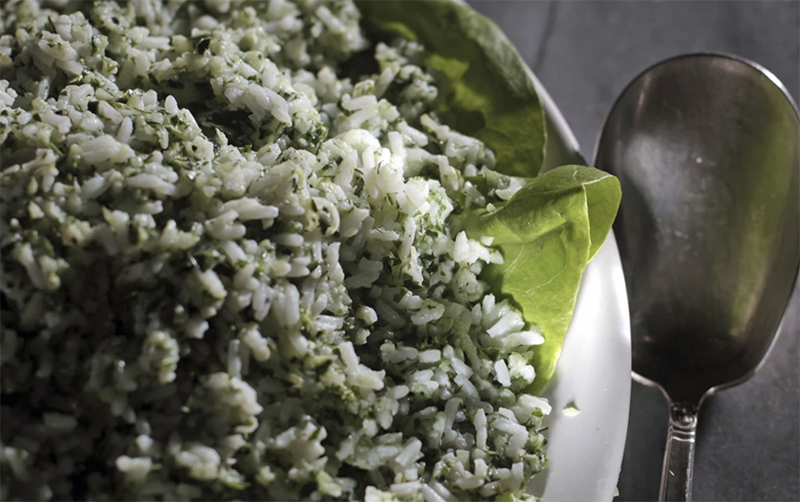
Photo by Bob Chamberlin
Cool rice and cucumber salad
From the Los Angeles Times
LA Times food writer Russ Parsons says rice salads don’t get no respect – deli cases are full of pasta-based salads, but almost none with rice. To improve the status of the rice salad, Parson provides this recipe that includes a healthy amount of chopped cucumber and fresh herbs.
Week #6; Weird berry year
- On: June 29, 2022
 0
0
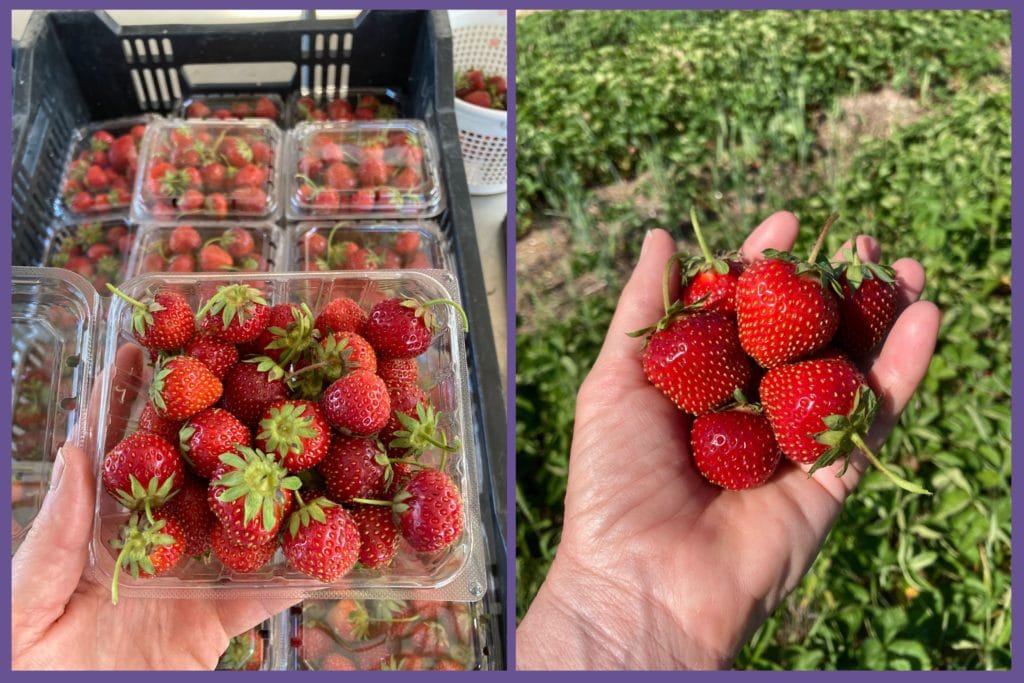
Small Jewel berries (left) and medium Jewel
This was an odd year for strawberries. Steve and I have spent hours analyzing this year’s field. Let’s review what we think happened.
We grew five varieties this year (to extend the season) but flowering was unusually concentrated across all the varieties following bursts of warm weather. That was an exciting moment because it predicted a massive u-pick. Sadly, hot, dry winds arrived at the flowering peak and damaged the blossoms. Earlier in May, I watched a different bout of hot, dry wind blast the flowers off my farmyard cherry and plum trees. Literally, every blossom was blown off the trees or left limp and damaged. There are zero cherries or plums on those trees. We think something similar happened in the strawberry patch. Even without wind, high temperatures damage strawberry pollen and flowers and there were many days in the 90s during the flowering season. Berries that do form during hot weather are smaller in size.
Basically, we got all of this year’s berries from three of the seven beds we planted. The remaining four beds were a bust, including one variety that succumbed to thrips, a pest that thrives in hot, dry weather. Home gardeners, we highly recommend the variety ‘Jewel’. It is a champ and produced almost all of this year’s berries.
The strawberries that formed this year are smaller than usual. Right now, we should be picking medium-sized berries, like you see in the right photo. We spent just as many hours harvesting, but have pints for you instead of quarts.
The fruiting peak coincided with our u-pick last weekend. That caught us by surprise, following weeks of sparse, small berries. The abundance was wonderful because we had berries for all who came to the farm and because you folks were here to pick the ripe fruit. Those berries would never have lasted long enough to harvest for the CSA boxes. The berries you receive this week all ripened since the weekend.
The best news is that the berries we have are intensely flavored, some of the best we’ve ever grown. The plants absorbed all that sunshine and turned it into small but amazing berries. We hope you enjoy and savor them.
Thank you for reading.
Beth
Veggie List & Veggie Notes
Week #6, June 30/ July 1, 2022
– Weekly shares
– EOW/ purple
– Sampler/ sun
Strawberries, 1 pint
Cucumbers, 2 or 3
Fennel, 2 to 3 bulbs with fronds
Lacinato kale, 1 medium bunch
Spinach, 1 medium bunch
Romaine lettuce
Zucchini & Zephyr summer squash, 3 to 3.5 lb
Snow peas, a small bag
Scallions, 1 bunch
Next week’s box will probably contain cabbage, zucchini, cucumbers, and more.
Strawberries – These are ripe so refrigerate and eat soon!
Cucumbers – Yeah, cucumber season begins! Our first cucumber field is a beauty this year. I’ll have to take some photos. We’re starting with a bang and everyone gets two this week.
Storage: Cucumbers store well at room temperature, especially if your house is cool. If you choose to refrigerate, choose a warmer part of your fridge. This is different than how most people handle their cucumbers but we’ve experimented with this and think room temperature is better.
Fennel (bulbs and lacy fronds) – Fennel is a ‘swing vegetable’; it can be used raw or cooked. Clean well and slice as thinly as possible for use in raw salads. It is good simply prepared with olive oil, lime or lemon juice, salt and shaved parmesan cheese. Cooking softens and sweetens fennel, and mellows its anise flavor. Both the bulb and leaves are edible. Here are ideas from Alice Water of Chez Panisse about how to use fennel: ‘It’s strong anise characteristic seems to suit fish particularly well. … We use fennel all the time. We add the feathery leaves to marinades for fish and to numerous salads, sauces and soups and we use them as a garnish, too. … The bulbs are sliced and served raw in salads in various combinations with other vegetables, parboiled for pastas; caramelized and served as a side dish; braised whole; or cooked in vegetable broths & fish stocks.”
Storage: Cover and refrigerate.
Lacinato kale (bundle of dark green leaves with pebbled texture. Also called ‘dinosaur kale) – Lacinato is such a nice variety of kale, quite tender with good flavor. Thin leaves means it’s a good choice for massaged salads. Lacinato is less productive than other varieties so it’s a treat to send it to you in the CSA boxes.
Spinach – This is the final bundle of spinach. Somehow this planting survived the hot weather! Honestly, it’s kind of a miracle. Yeah!
Snow peas. We have a handful for you this week, packed in a little paper bag. To remove strings, snap off the stem end and pull the string down the concave side of the pod (the inward-curing side). Throw away the string and eat the pod. The thicker pea pods will usually have a string along both edges. Remove them when you snap off the stem.
Storage: Refrigerate.
Uses: Use to top a raw salad or stir-fry.
Scallions – This is the final scallion delivery until fall. In a few weeks, we’ll have sweet Walla Walla onions for you. Uses: Our recipe writers love scallions as much as I do! There are loads of recipes that include scallions in newsletters from the last few weeks.
RECIPES by Phoebe
Fennel Lovers’ Risotto
In this recipe, diced fennel bulbs melt into a creamy risotto, while fennel fronds and crushed fennel seeds create a bright, crunchy topping. Needless to say, it has a robust fennel flavor, which I love against the tangy white wine and rich, savory Parmesan cheese.
Serves 4
Prep time: 10 minutes
Cook time: 40 minutes
Fennel Frond & Seed Topping
¼ cup raw almonds
1 teaspoon fennel seeds
3 tablespoons chopped fennel fronds
3 tablespoons freshly grated Parmesan cheese
2 teaspoons lemon zest
For the Risotto
2½ tablespoons extra-virgin olive oil
1 fennel bulb, diced
1 medium yellow onion, diced (or an additional fennel bulb)
½ teaspoon sea salt
Freshly ground black pepper
2 garlic cloves, minced
1 cup Arborio rice, rinsed
½ cup dry white wine
4 cups vegetable broth
⅓ cup freshly grated Parmesan cheese
- Make the topping: Place the almonds in a small dry skillet over medium-low heat and toast, stirring often, until fragrant and lightly browned, 2 to 4 minutes. Remove from the skillet and set aside.
- Add the fennel seeds to the skillet and toast until fragrant, about 30 seconds. Transfer to a mortar and pestle and roughly crush. Chop the almonds.
- In a small bowl, stir together the chopped almonds, crushed fennel seeds, fennel fronds, Parmesan, and lemon zest. Set aside for serving.
- Make the risotto: Heat 2 tablespoons of the olive oil in a medium Dutch oven over medium heat. Add the fennel bulb, onion, salt, and several grinds of pepper and cook, stirring occasionally, until the vegetables are soft and translucent, 8 to 10 minutes. Stir in the garlic, then add the rice and toast, stirring often, until translucent but not browned, about 2 minutes.
- Pour in the wine, stir, and let it cook down for 30 seconds. Add ¾ cup of the broth and simmer, stirring continuously, until the broth is mostly absorbed. Repeat with the remaining broth, adding ¾ cup at a time, stirring continuously, and allowing each addition to be absorbed by the rice before pouring in the next. The entire process will take about 20 to 30 minutes.
- When the final addition of broth is nearly absorbed by the rice, add the Parmesan and the remaining ½ tablespoon olive oil. Turn off the heat, stir vigorously, and allow the risotto to sit for 2 minutes. If it thickens too much, loosen it with a splash of broth before serving.
- Season to taste, top with the frond & seed topping, and serve.
Gingery Pea & Scallion Fried Rice
Snow peas add color and crunch to this unconventional riff on fried rice. If you can, cook the rice the day before so that it has a chance to dry out in the fridge. The day-old rice will give this recipe a lighter, fluffier texture, and it’ll become lightly crisp.
Serves 4
Prep time: 10 minutes
Cook time: 15 minutes
2 tablespoons plus 1 teaspoon neutral oil, such as canola or grapeseed
8 ounces snow peas or snap peas, strings removed, sliced on the bias into ¼-inch pieces
4 scallions, sliced, dark green tops reserved for garnish
2 garlic cloves, minced
1 tablespoon minced fresh ginger
3 cups cooked and cooled rice, preferably day-old
3 large eggs, beaten
2 tablespoons tamari or soy sauce
1 tablespoon rice vinegar
1 teaspoon sesame oil
Sesame seeds, for garnish
Sriracha, for serving
Sea salt
- Heat 1 tablespoon of the oil in a large nonstick skillet over medium-high heat. Add the snow peas and cook without stirring until the peas are charred on one side, about 3 minutes. Add the white and light green parts of the scallions and a pinch of salt, toss, and cook, stirring occasionally, until the vegetables are softened, 1 to 2 minutes. Stir in the garlic and ginger. Remove the veggies from the pan and set aside.
- Return the pan to medium-high heat and add another 1 tablespoon of the oil. Add the rice and press it into an even layer at the bottom of the pan. Cook without stirring until the rice is lightly crisp on the bottom, 5 to 8 minutes. Stir, then create a well in the center of the rice. Add the remaining 1 teaspoon oil, then pour the eggs into the well, sprinkle with salt, and scramble. Stir the scrambled eggs into the rice.
- Add the veggies back to the pan and stir to combine. Add the tamari and vinegar and cook, stirring, until the liquid cooks down and everything is heated through, 1 to 2 minutes. Turn off the heat and stir in the sesame oil.
- Season to taste and garnish with sesame seeds and the reserved scallion tops. Serve with sriracha.
Shaved Fennel & Crushed Olive Salad
From Smitten Kitchen
This simple shaved fennel salad would be a perfect light, refreshing side dish for so many meals. The crisp shaved fennel mingles with juicy smashed olives, sharp cheese, and a tangy orange-scented vinaigrette.
.
.

Photo by Jeanine Donofrio & Phoebe Moore
Zucchini Muffins
From Love & Lemons
Moist, warmly spiced, and studded with crunchy walnuts, these muffins are a yummy breakfast treat. If you like, replace the walnuts with an equal amount of chocolate chips, or sub summer squash for the zucchini.
.
.
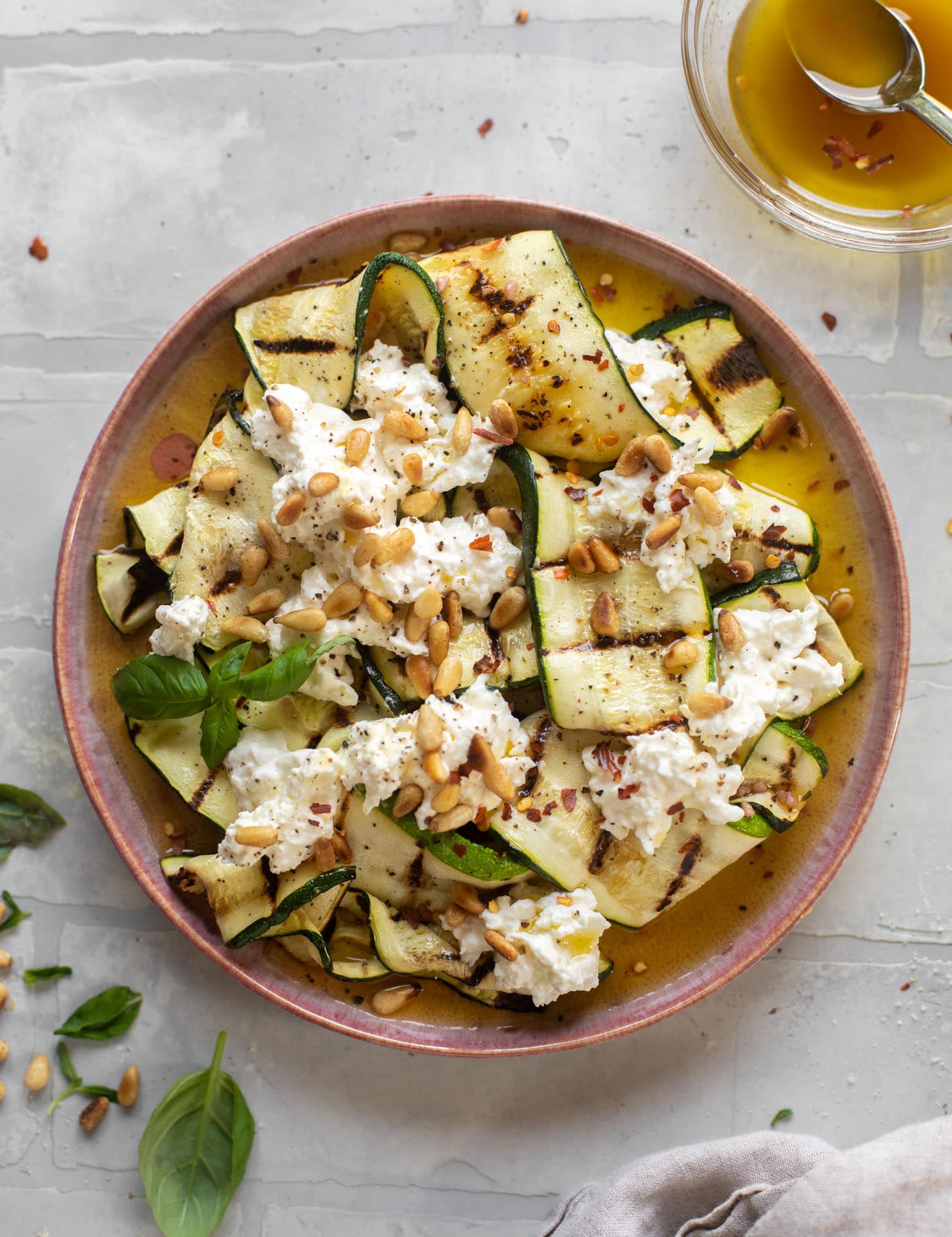
Photo by How Sweet Eats
Grilled Zucchini with Burrata & Pine Nuts
From How Sweet Eats
Creamy dollops of burrata play off tender grilled zucchini in this simple summer side dish. A 5-ingredient vinaigrette adds zing. The summer squash from this week’s box would work nicely in this recipe, too!
.
.

Photo by Minimalist Baker
White Bean Kale Salad
From Minimalist Baker
This punchy kale salad features lemony white beans, homemade garlic croutons, and a bright, creamy tahini dressing. Serve it as a side dish, or enjoy it on its own for a healthy lunch.
.
.
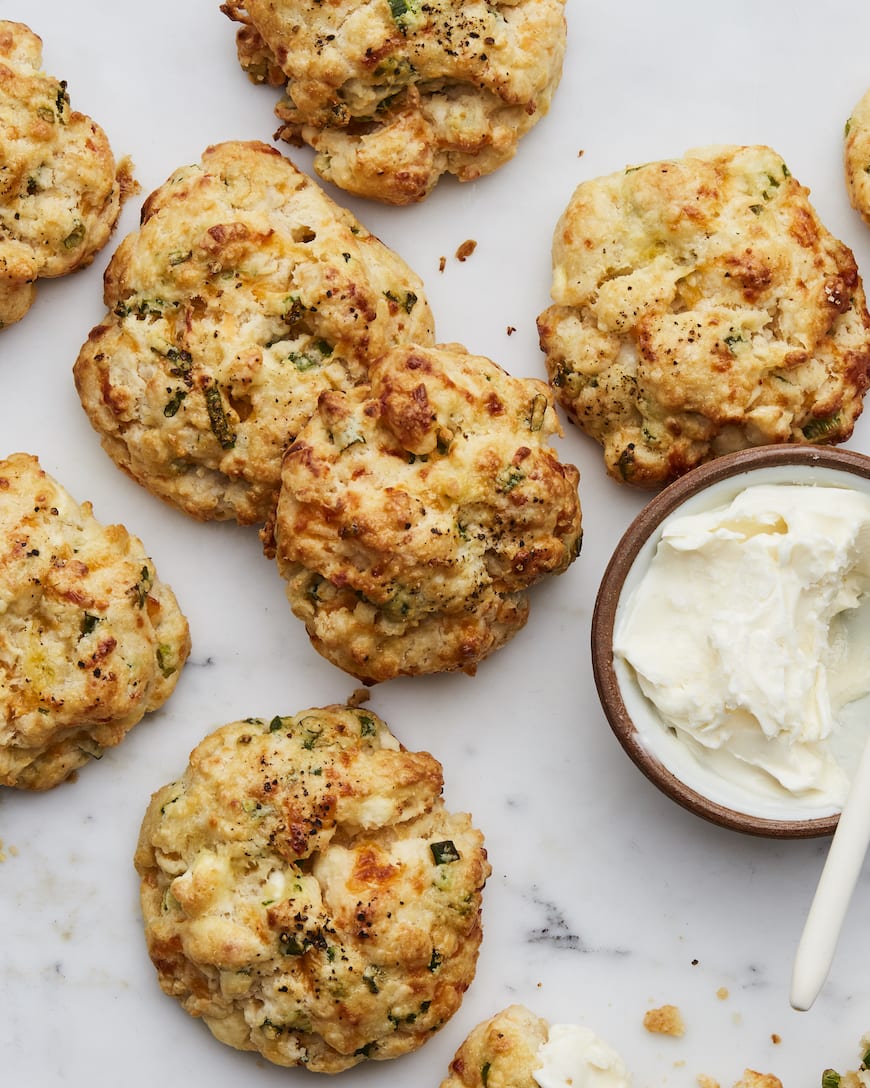
Photo by What’s Gaby Cooking
Savory Cheese & Scallion Scones
From What’s Gaby Cooking
These savory scones would be such a fun way to use the scallions in this week’s box! They feature 3 kinds of cheese – cream cheese, feta, and sharp cheddar.
.
.
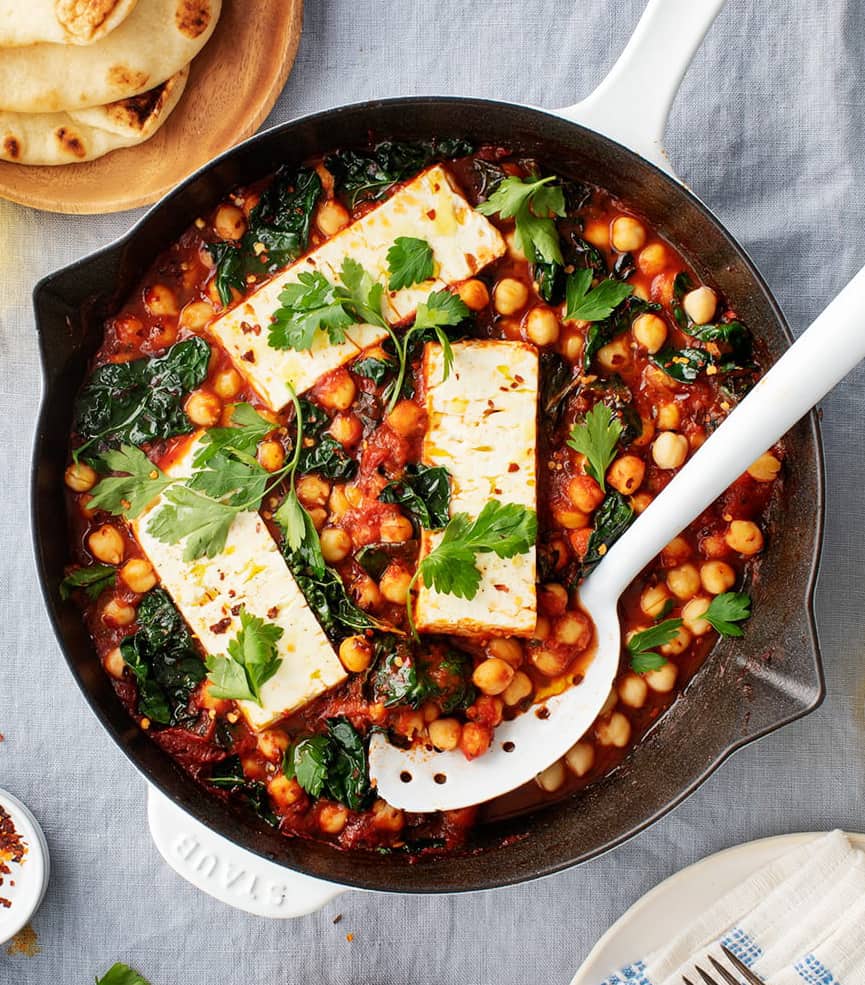
Photo by Jeanine Donofrio & Jack Mathews
Baked Feta
From Love & Lemons
I love this recipe because it’s really simple, but also really flavorful. A cumin-spiced tomato sauce coats chickpeas and lacinato kale, and creamy slabs of baked feta nestle on top. Serve it with good bread for sopping up the sauce.
Week #5
- On: June 22, 2022
 0
0
The hot weather has been hard on the strawberries. They are smaller than usual but intensely flavored. We should have one pint for everyone this week. Savor and enjoy them! Check your email later this week for messages from the farm about berry picking.
Our daughter Sophie broke her ankle so I spent most of the last week in St Paul, helping her before and after surgery. She fell while climbing in an indoor ‘bouldering’ gym. The surgery went well but she has a long recovery ahead. Anyway, if you sent me an email this week but didn’t hear back from me, please just send it again. I kept up with email but something might have slipped through the cracks.
Beth
Veggie List & Veggie Notes
Week #5, June 23/24, 2022
– Weekly shares
– EOW/ green
Strawberries, 1 pint
Snap peas, 0.7 lb
Napa cabbage
Swiss chard, 1 medium bunch
Zucchini & yellow squash, ~3.5 lb
Iceberg lettuce
Kohlrabi
Scallions, 1 bunch
Next week’s box will probably contain snap & snow peas, zucchini, spinach, greens, lettuce and more.
Strawberries – Storage: Refrigerate and eat soon! They are delicious!
– Most berries are quite clean. If you want to clean your berries, rinse gently. Don’t soak them, just rinse.
– Please recycle your strawberry containers. We no longer collect them for re-use. Please do not return them to your pick-up site.
Snap peas – These pea pods have strings to remove. Snap off the stem end and pull the string down the concave side of the pod (the inward-curing side). Throw away the string and eat the pod. The thicker pea pods will usually have a string along both edges. Remove them when you snap off the stem. Snap peas should be eaten pod and all. They are delicious raw, or very lightly cooked or stir-fried.
Heads up!: You may find some fibrous shell-type pods mixed in, from off-type plants. This happens with some varieties.
Preparation: They will need a quick rinse to remove faded gray blossoms.
Storage: Refrigerate.
Napa cabbage (large, pale green cabbage with crinkled leaves) – Napa cabbage is an interesting vegetable, useful for both fresh, raw salads and for cooking. Its most famous use is fermented kimchi. I like to prepare a fresh, unfermented kimchi. Same seasonings, but it’s ready to eat right away. You will be amazed at how much shredded napa cabbage shrinks when prepared this way. See here for an example, but cut the salt in half (or even further): Grilled Flank Steak with Kimchi-style Coleslaw.
Storage: Napa stores very well. When refrigerated, it will keep for several weeks. Peel off the outer layer and it will be ready to use. Here are a few preparation ideas from the ‘Asparagus to Zucchini’ cookbook.
– Chop raw napa into green salads.
– Substitute napa in traditional coleslaw.
– Chinese cabbage cooks quickly. Steam 3-5 minutes, or until leaves are wilted down but remain slightly crisp.
– Substitute napa cabbage for common cabbage in recipes, but reduce the cooking time by 2 minutes.
– Napa cabbage is the main ingredient in egg rolls. Try making an egg roll mixture to eat as a cooked side dish instead of preparing time-consuming egg rolls.
RECIPES by PHOEBE
Garlic Noodles with Spicy Tofu Crumbles & Roasted Napa Cabbage
Heads up: this recipe calls for quite a bit of cabbage. It might seem like too much to fit on one large baking sheet, but it really wilts down as it cooks, becoming tender and caramelized so that it practically melts into the garlic noodles. The other fun thing about this recipe is the sriracha tofu crumbles. They’re crispy and spicy, and, if you ask me, easier to work with than cubed tofu, which has a tendency to fall apart anyway. We like to eat them straight off the baking sheet!
Serves 4
Prep time: 15 minutes
Cook time: 30 minutes
10 cups shredded Napa cabbage (about 1 pound)
3 scallions, thinly sliced, green tops reserved
Tamari
Avocado oil
14 ounces extra-firm tofu, patted dry and roughly crumbled
2 tablespoons sriracha
8 ounces dry wheat noodles
1½ tablespoons rice vinegar
2 garlic cloves, grated
- Preheat the oven to 425°F and line two large baking sheets with parchment paper.
- Place the cabbage and the white parts of the scallions on one of the baking sheets and drizzle with 1½ tablespoons tamari and 1 tablespoon avocado oil. Toss to coat and spread evenly on the baking sheet. Place the tofu on the second baking sheet and drizzle with 1½ tablespoons tamari, 2 teaspoons avocado oil, and the sriracha. Toss to coat and spread evenly on the baking sheet. Place both baking sheets in the oven and roast until the tofu is browned and crisp around the edges and the cabbage is soft and browned, 30 to 40 minutes, tossing the cabbage twice throughout the cooking process.
- Meanwhile, bring a large pot of water to a boil and prepare the noodles according to the package instructions. Drain and rinse under cold water, running your fingers through the noodles to prevent clumping.
- In a large bowl, whisk together 3 tablespoons avocado oil, 1 tablespoon tamari, the rice vinegar, and garlic. Add the noodles and toss to coat. Add the roasted cabbage and toss again.
- Portion the noodles into bowls and top with the sriracha tofu. Garnish with the reserved scallion tops and serve.
Zucchini Turkey Burgers
Grated zucchini (or yellow squash) adds moisture to these easy homemade turkey burgers. Serve them on buns with your favorite fixings. Iceberg lettuce from this week’s box would be great!
Serves 4
Prep time: 20 minutes
Cook time: 10 minutes
1 teaspoon extra-virgin olive oil, plus more for cooking the burgers
1 cup grated zucchini
1 pound lean ground turkey
2 tablespoons finely chopped scallions
1 tablespoon Dijon mustard
1 tablespoon mayonnaise
1 garlic clove, grated
¼ teaspoon cayenne pepper
1 teaspoon sea salt
Freshly ground black pepper
4 hamburger buns, for serving
Desired fixings, for serving
- Heat the olive oil in a large nonstick or cast-iron skillet over medium heat. Add the zucchini and cook, stirring occasionally, until softened, about 3 minutes.
- Transfer the zucchini to a large bowl and add the turkey, scallions, mustard, mayo, garlic, cayenne, salt, and several grinds of pepper. Use a fork or spatula to mix until well combined. Form the mixture into 4 patties and chill for at least 10 minutes and up to an hour to make the patties easier to handle.
- Heat the same skillet over medium-high heat and coat the bottom with oil. Add the patties and cook until browned on both sides and cooked through, 4 to 5 minutes per side. (When checked with a meat thermometer, the internal temperature should reach 165°F.) Reduce the heat as needed if the burgers brown too quickly.
- Serve on the hamburger buns with your desired fixings.
Zucchini Butter Spaghetti
From Smitten Kitchen
In this 8-ingredient recipe, grated, sautéed zucchini transforms into an irresistible sauce for pasta. The recipe calls for a handful of basil leaves, but you could easily skip them or replace them with any leafy herb that you happen to have on hand.
.
.
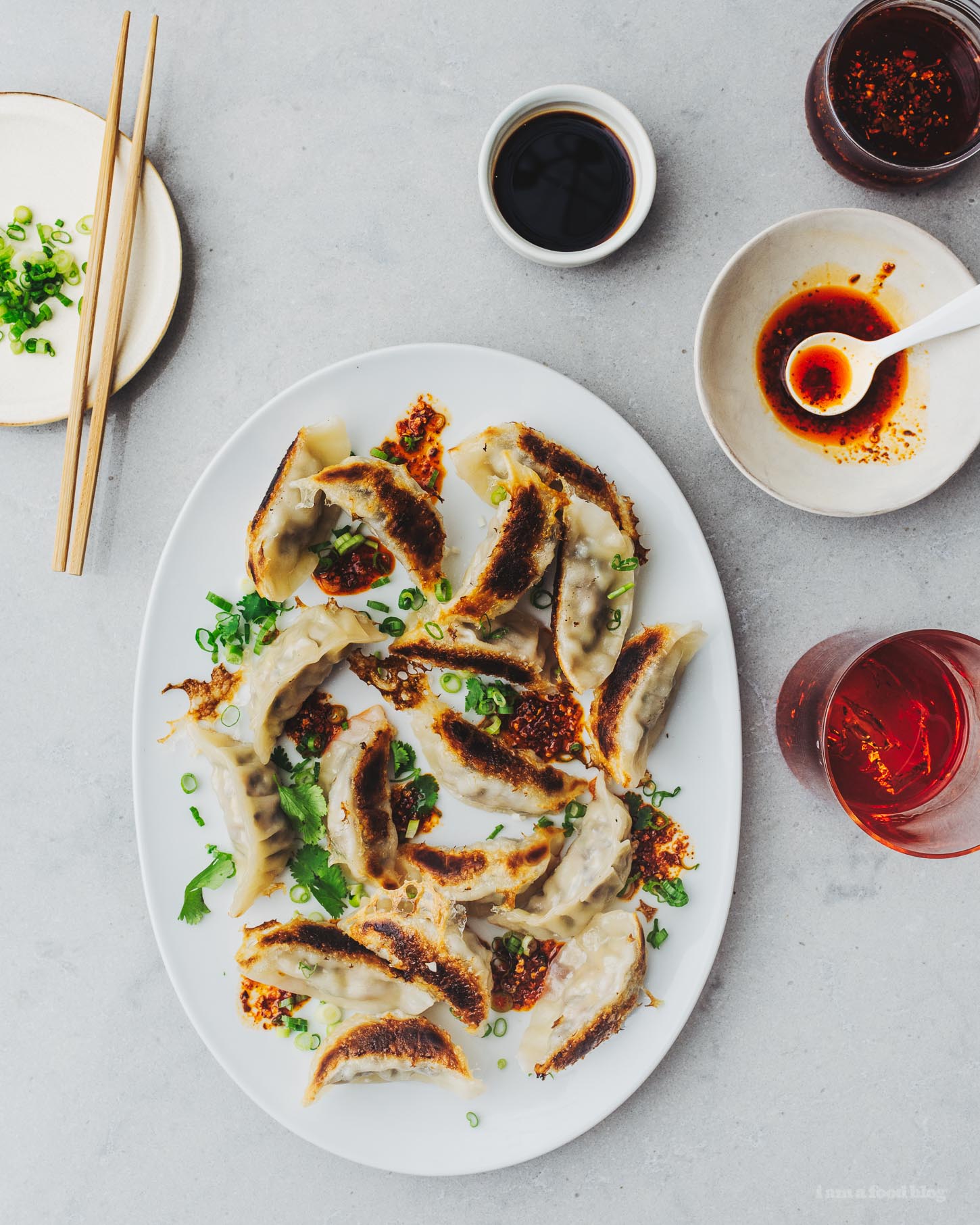
Photo by I am a food blog
Homemade Pork and Garlic Chinese Potstickers
From I am a food blog
If you’re looking for a fun cooking project to try this summer, make your own dumplings at home! This recipe has a flavorful pork, scallion, and napa cabbage filling and uses store-bought dumpling wrappers to streamline the cooking process.
.
.
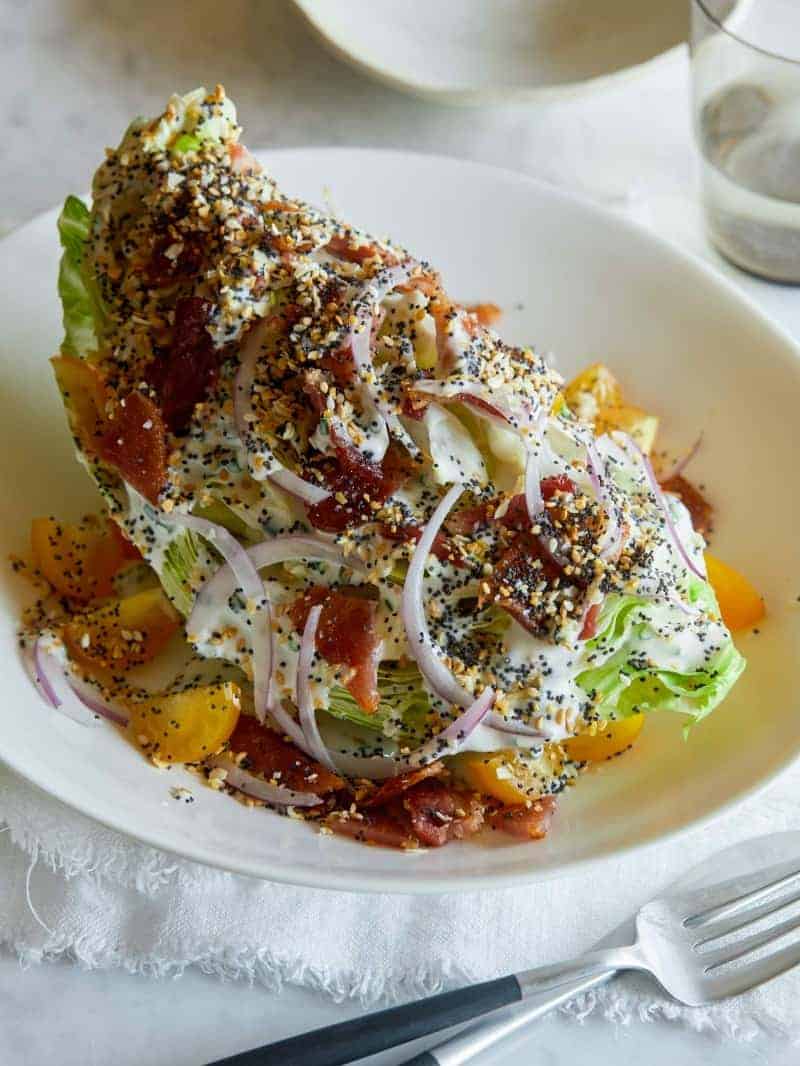
Photo by Spoon Fork Bacon
Everything Bagel Seasoning Wedge Salad
From Spoon Fork Bacon
This fun riff on a classic wedge salad would be a great way to use the iceberg lettuce that’s in the box this week. Substitute minced scallions for the chives and dill in the dressing, and skip the red onion and cherry tomatoes on top. Thanks to the creamy, tangy ranch dressing, crispy bacon, and everything bagel seasoning, the salad will be plenty flavorful without them.
.
.
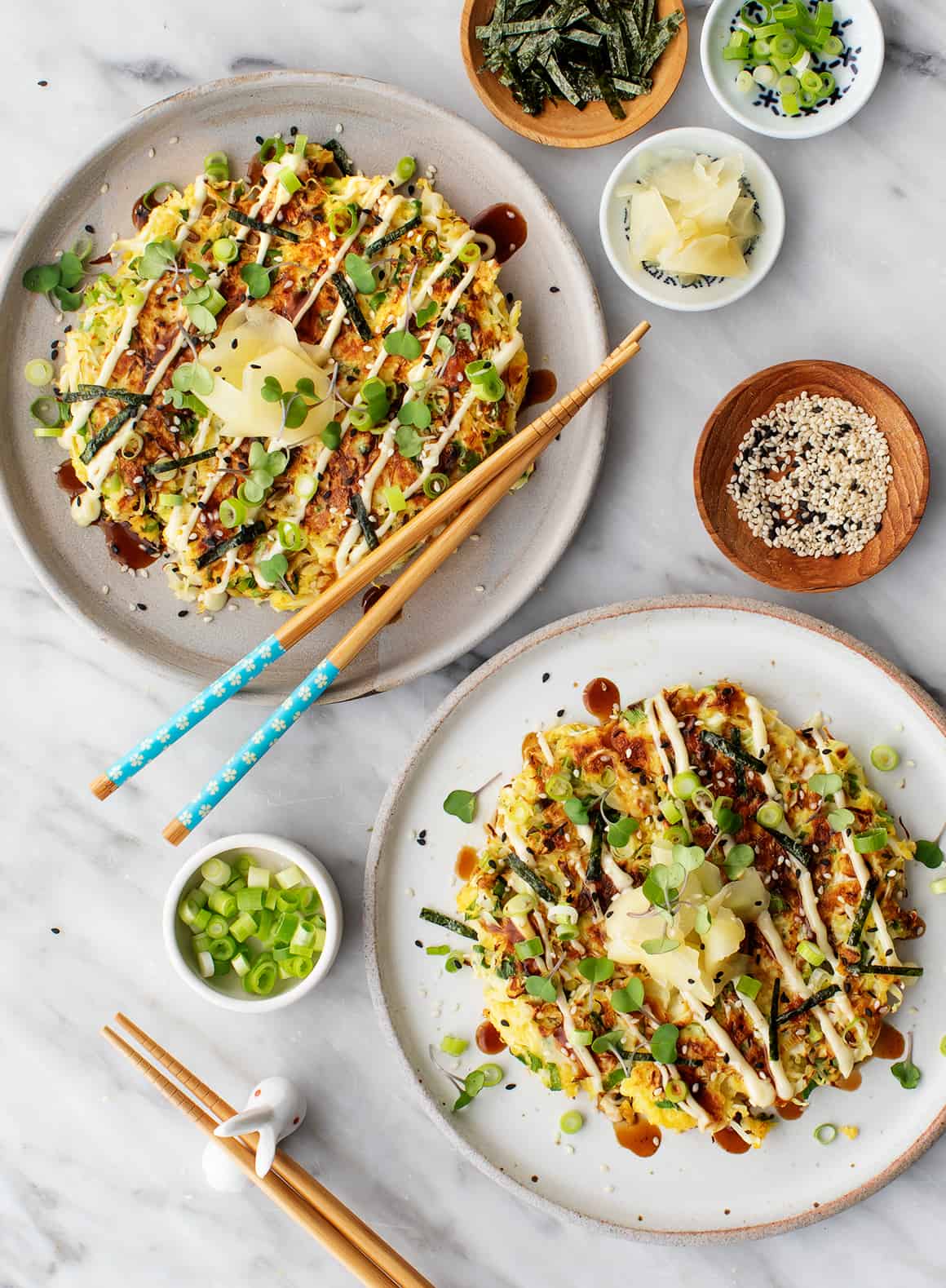
Photo by Love & Lemons
Okonomiyaki
From Love & Lemons
Okonomiyaki are savory Japanese pancakes made with cabbage, scallions, and often assorted seafood or meats. This recipe isn’t traditional in that it’s vegetarian, but it is really delicious and surprisingly simple to make. Don’t hesitate to pile on the toppings – they’re a huge part of what makes this recipe so flavorful and fun to eat!
.
.
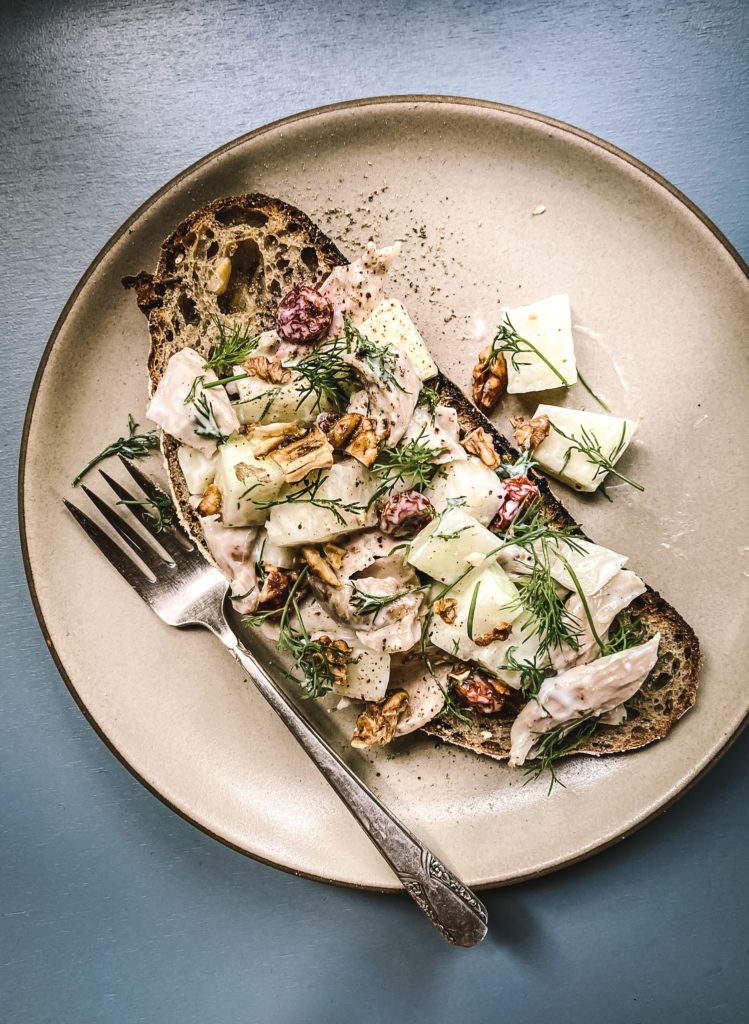
Photo by Andrea Bemis
Kohlrabi Chicken Salad
From Dishing Up The Dirt
Kohlrabi adds crunch to this veggie-forward twist on classic chicken salad. Feel free to skip the dill, or substitute any soft, leafy herb that you happen to have on hand.
.
.
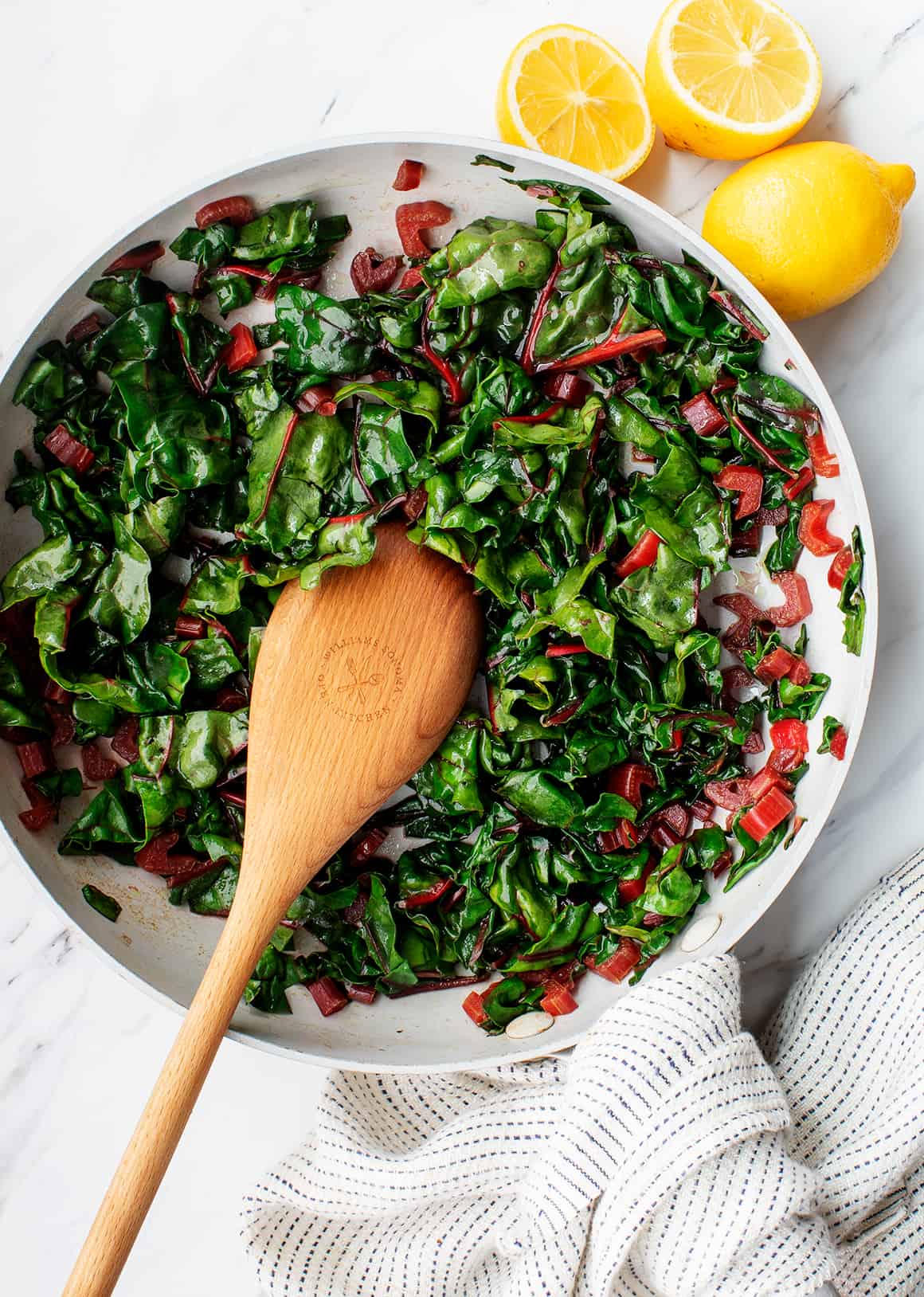
Photo by Love & Lemons
Simple Sautéed Swiss Chard
From Love & Lemons
Serve these lemony sautéed greens (and stems) as a side dish, or use them as a starting point for a larger meal. Toss them with pasta, Parmesan, and toasted pine nuts for a quick dinner, or add them to a frittata with scallions from this week’s box.
Week #4, Farm tips for keeping cool
- On: June 15, 2022
 0
0
Hot days are brutal. Our trusty crew has suggestions for you.
“Hydrate or die-date”. I do not love this phrase but it’s compelling. Our final task each day is to wash and refill our water jugs and put them in the cooler overnight. Then we are ready with chilled water the next day.
Soak your hat. Better yet, soak then freeze it! The effect does not last long but it certainly wakes you up.
Appreciate the wind! A hot day is bearable with a steady wind.
Wear a lightweight long-sleeved shirt to keep the sun off your skin. It seems counterintuitive and that it would make you hotter but it does not, especially if there’s a breeze. Trust me, you will feel better at the end of the day.
Soak your head under a faucet! It’s the quickest way to cool down.
With temps in the 90’s we need to watch for heat exhaustion. Our crew watch out for each other, especially the newer employees, making sure everyone rotates jobs between the field and the pack shed. Our walk-in coolers offer a quick respite and the inside of our barn stays cool, a good place to sit down if needed. We offer gatorade by the gallon.
We hope you are all doing well in the heat and taking care of yourselves.
Beth
Veggie List & Veggie Notes
Week #4, June 16/17, 2922
– Weekly shares
– EOW/ purple
– Sampler/ moon
Strawberries, 1 paper cup
Komatsuna, 1 big bunch
Spinach, 1 medium bunch
Red leaf lettuce
Zucchini or yellow squash, 1 or 2 ct
White salad turnips, ~1/2 lb
Kohlrabi, 1
Leek, 1 small
Scallions, 1 bunch
Next week’s box will probably contain spring greens, snap peas, zucchini, lettuce, kohlrabi, scallions, strawberries and more.
Strawberries in a paper cup – Enjoy this tiny amount of berries. They are very ripe because of insane heat Tuesday and Wednesday so they are not going to last. Don’t be fooled if they look over-ripe – they are delicious. I suggest that you eat them on your way home from your CSA site but you were probably going to do that anyway!
Komatsuna (large bundle of dark green leaves) – We’ve moved on to the next variety in this planting and we still love this new type of Asian green. Please ignore the flea beetle damage again this week – that’s just how that field turned out. Can be used as a substitute for other Asian greens or mustard greens.
Zucchini or yellow squash – We should have one or two squash for each of you. This is the first harvest, the beginning of a long squash season. Some of these first fruits are lumpy, the result of incomplete pollination. This happens every year. The bees have found the zucchini field and pollination has already improved.
New varieties: We trying some new zucchini varieties, some of which are quite dark in color, so don’t be surprised if your squash looks a little different this year.
Storage: Zucchini and summer squash need refrigeration but do not do well at very cold temperatures, as they soften and form pits in their surface. Refrigerate these squash but in the warmest part of your fridge. Wash the squash just before you use it.
Kohlrabi (pale green, round vegetable with thick skin) – Crunchy and sweet, kohlrabi is a great addition to salads.
Storage: Kohlrabi bulbs will store for a month in the refrigerator. Remove the leaves if you plan to store for more than a few days.
Uses: Kohlrabi are good peeled and eaten out of hand, or added to sandwiches, or added to salads. It makes a nice salad on it’s own. You can grate it, slice it, or cut it into matchsticks. It’s also good cooked.
Leek – We have one leek for each of you. Last fall, we ended the harvest season with every cooler full and we were pretty worn out. We left one bed of leeks in the ground and gambled that they would survive the winder. Some did, then regrew this spring into the leek you receive this week.
Storage: Cover and refrigerate. Use soon.
RECIPES by DEB

Scallion Meatballs
This dish is based on a recipe from The Canal House, that’s made with ground turkey, while I have used ground pork. You may use either! You can also make small meatballs, and serve them as an appetizer, or larger ones – as shown – and serve them with rice for dinner.
Serves: 4 generously
Takes: 40 minutes
Sauce
1/2 cup dark brown sugar
1/2 cup water
1/2 cup soy sauce, reduced sodium if your prefer
1/2 cup vermouth (sweet or dry), or white wine of any variety
1/4 cup roughly chopped fresh ginger
1 teaspoon ground coriander
4 whole black peppercorns
1/2 cup ketchup
a good squirt of Siracha
Meatballs
1 pound ground pork or turkey
5-6 scallions, one small bunch, finely chopped (can be done in the food processor)
1 egg, lightly beaten
1 cup breadcrumbs
2 tablespoons sesame oil
2 tablespoons soy sauce
Freshly ground black pepper to taste
optional: fresh cilantro for garnish
- Make the sauce: Combine the sugar and water in a wide skillet and heat over medium heat until the sugar dissolves. Add the soy sauce, vermouth, ginger, coriander, and peppercorns, and simmer until the sauce is slightly reduced and looks a bit syrup-y. Cool slightly and strain into a glass measuring pitcher with a spout. Add the ketchup and Siracha and set aside while you make the meatballs. Wipe out the skillet.
- Make the meatballs: Heat the oven to 375°. In a large bowl or a stand mixer, combine the pork, scallions, egg, breadcrumbs, sesame oil, and soy sauce and mix throughly. Hands are good for this. Season with pepper.
- Shape the meatballs: Here’s where you get a choice – you can make golf-ball size dinner meatballs, using 3 tablespoons, yielding about 18 meatballs; OR appetizer size, using 1 tablespoon, yielding about 24. Either way, as you shape them, arrange the meatballs on a parchment-lined or lightly oiled baking sheet. Transfer to the oven and bake for about 20 minutes until lightly browned.
- Finishing: Transfer the meatballs back into the wiped out skillet. Pour in the sauce, heat over low heat, and roll the meatballs around in the sauce till they’re nicely glazed. Garnish with cilantro if using, and serve – with rice for dinner or toothpicks for appetizers.
.
.
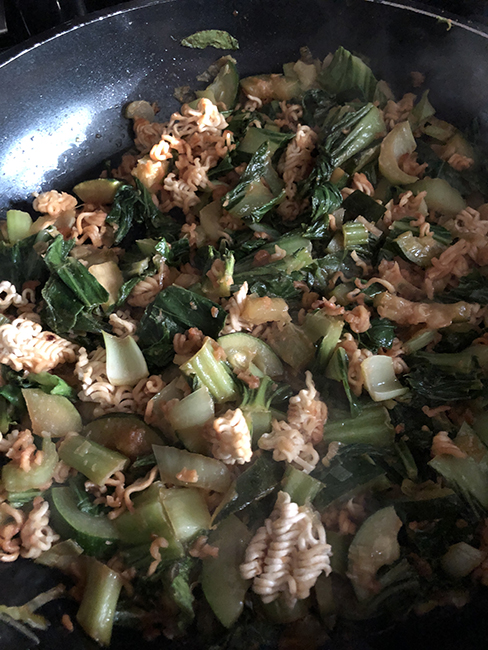
Stir Fry with Toasted Noodles
Serves: 3-4
Takes: 30 minutes
This recipe uses Komatsuna, leek, and zucchini from this week’s box, but you could use just about any combination of veggies – clean out the crisper drawer! You can also use other types of noodles instead of ramen. Here’s a picture of a batch I made with Udon, because one of our kids ate the last pack of ramen noodles.
Ingredients:
One 3-oz. package of ramen noodles, or about 3 oz of any other kind of thin noodle; spaghetti, Udon, angel hair
2 tablespoons of sesame oil or vegetable oil, divided
1 leek, white and light green parts, split lengthwise, rinsed, and chopped
About 1 pound of greens such as Komatsuna or bok choy, rinsed, leaves separated from stems, and chopped
1 medium zucchini or summer squash, chopped
1/4 cup hoisin sauce, purchased or homemade
- Add one tablespoon of the oil to a large skillet or wok, and heat over medium-high heat until fragrant. Crush the ramen noodles by bashing the package with a rolling pin. If using another noodle type break them into 2-3 inch lengths. Add the noodles to the hot oil and toast, stirring often. When toasted transfer the noodles to a bowl.
- Pour the remaining tablespoon of oil into the skillet, place it over medium-high heat and add the leek. Toss, turn the heat down, and cover for a few minutes to soften. Add the zucchini and Komatsuna stems, and continue to cook for about 5 more minutes, until softened. Make a space in the middle of the pan and add the hoisin sauce. Stir to melt the sauce, and add the leaves and toasted noodles. Cover and steam for a few minutes to wilt the greens. Uncover, stir, and if it seems too wet, cook a few more minutes to boil off the extra moisture.
.
.

Photo from jamiroliver.com
Waldorf salad | Jamie Oliver
From Jamie Oliver
This recipe does include a bunch of things we do not have in the box, especially celery and fresh tarragon. The secret trick is caramelizing the grapes and walnuts. Try it with the red leaf lettuce and salad turnips subbed in for the apple – add a few pinches of dried tarragon to the lemony yogurt dressing and it will bring it together deliciously!
Spinach Mozzarella Grilled Cheese on Pretzel Bread
From i am a food blog
Here’s a fun way to eat up this week’s spinach – pretzel bread and buns are readily available at the grocery store.
Kohlrabi-and-Turnip Slaw Recipe
From marthastewart.com – Salad Recipes
This refreshing slaw recipe calls for about a pound of kohlrabi and 8 oz. of turnips – we have the right total amount of veggies from the box, but the reverse proportions. Feel free to use the larger amount of turnips, especially since the salad turnips are so mild, and less kohlrabi.
Leek Mac and Cheese Recipe
Grace Parisi, from Food & Wine
In this recipe, the tough green part of the leek is softened by slow cooking and added to Mac & cheese. You can add quicker cooking spinach or Komatsuna greens as well.
Simple Red Leaf Salad
From AllRecipes
Here’s a nice salad idea for our red leaf lettuce.

